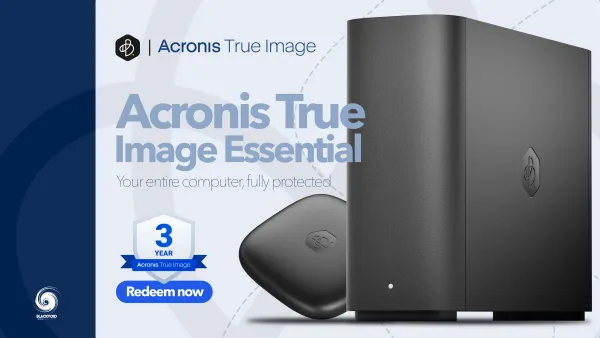Synology Solution Day 2025 - an in-depth overview
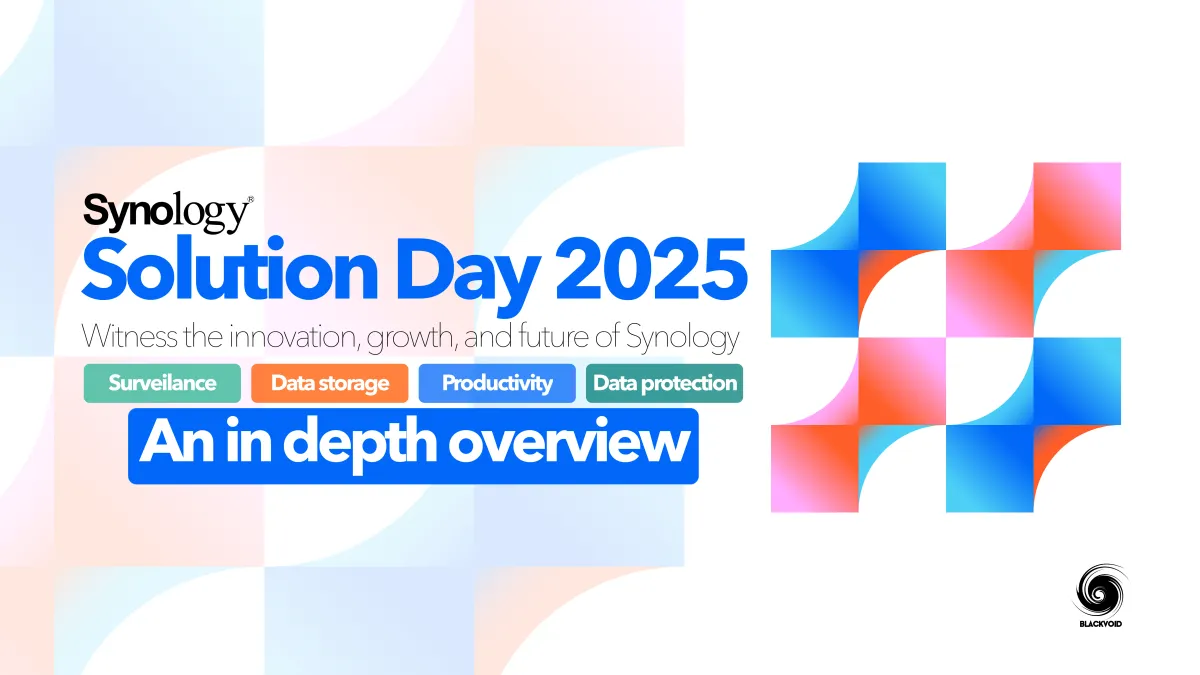
Just last week, on the 17th of September, Synology kicked off its annual Solution Day expo in Taiwan, which will last until October 30th, visiting more than twenty locations around the globe.
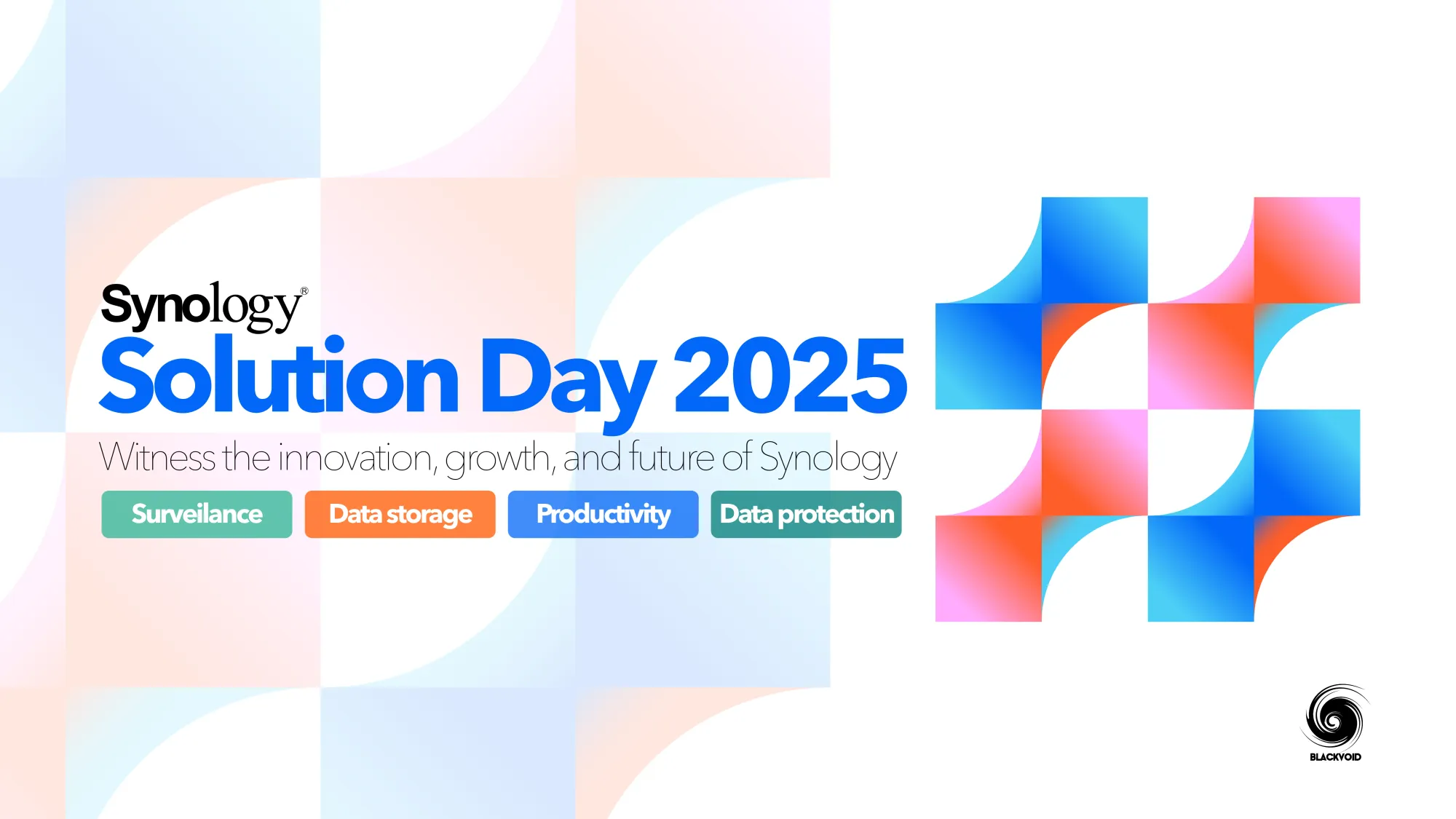
Short introduction to this years Solution Day 2025
Across four main categories, Synology experts and guests had the privilege of seeing some of the new technologies and solutions that the company is preparing for the upcoming year.
Focusing on data storage, data protection, surveillance, and productivity, Synology is clearly demonstrating its determination to move all the way up into the Tier 0 business and enterprise market segment.
Get Ready for Enterprise Storage with Synology
To be competitive in that market tier, Synology needs certain technology that will allow it to market and eventually sell devices that can accommodate the expectations of enterprise businesses.
This means pushing the envelope beyond the current RS, FS, and HD lineup of devices into new territory. For a while now, Synology has been developing a new series of devices that were presented and announced several years ago, but only just recently, starting with this year's Computex expo, demoed in real life for the first time.
Scale-out storage solution
The first new line of devices is the new GS series (GridStation), built specifically to handle the scalability and capacity demands of massive unstructured data workloads.
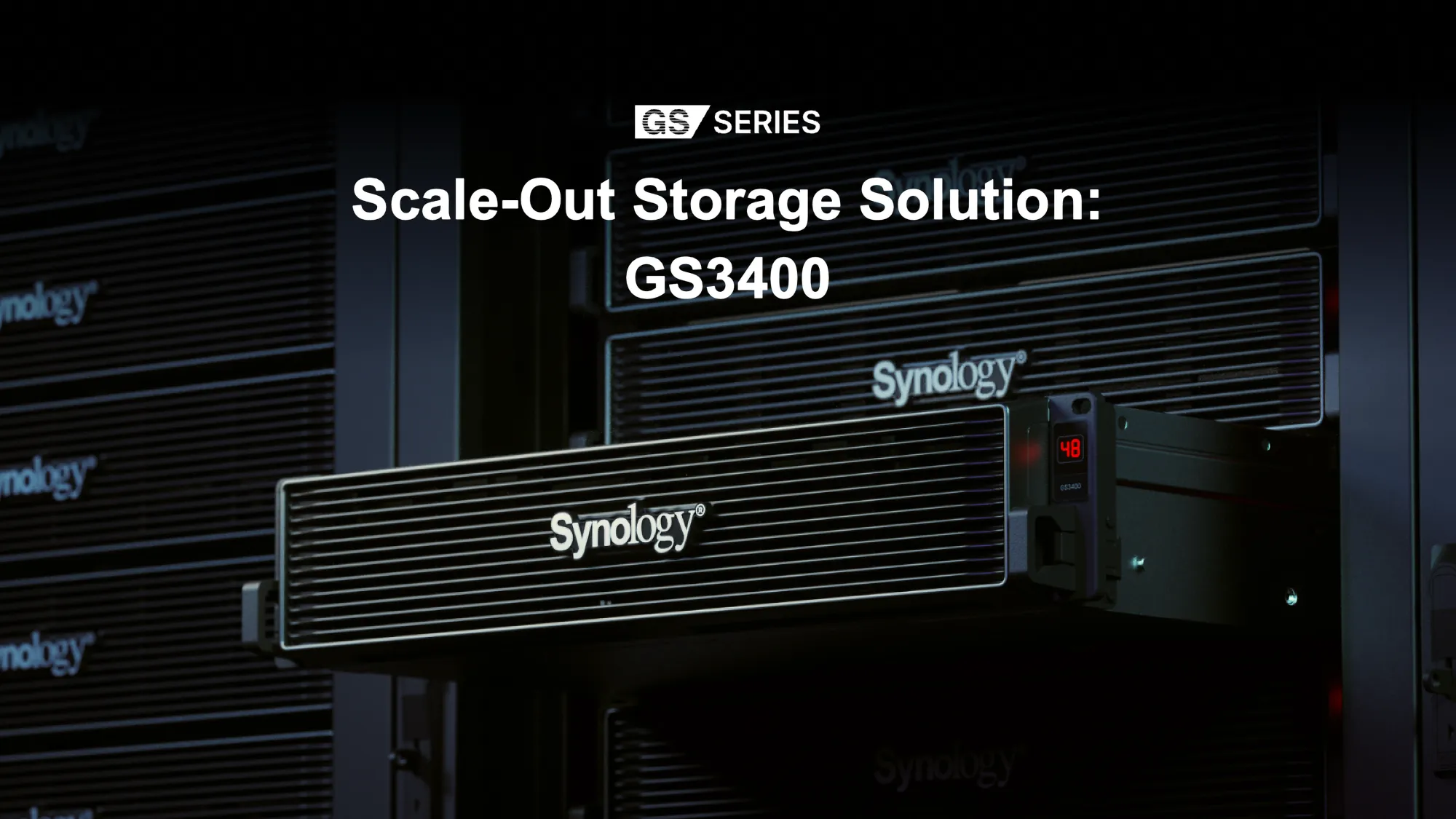
With it, Synology is taking its first step into distributed systems and object storage. GS3400 is designed for scenarios involving large volumes of data and long-term retention needs—such as archiving and backup, surveillance video storage, system logs, and large-scale file sharing.
These scenarios typically share several characteristics, such as large and fast-growing data sets, infrequent access, as well as long retention requirements.
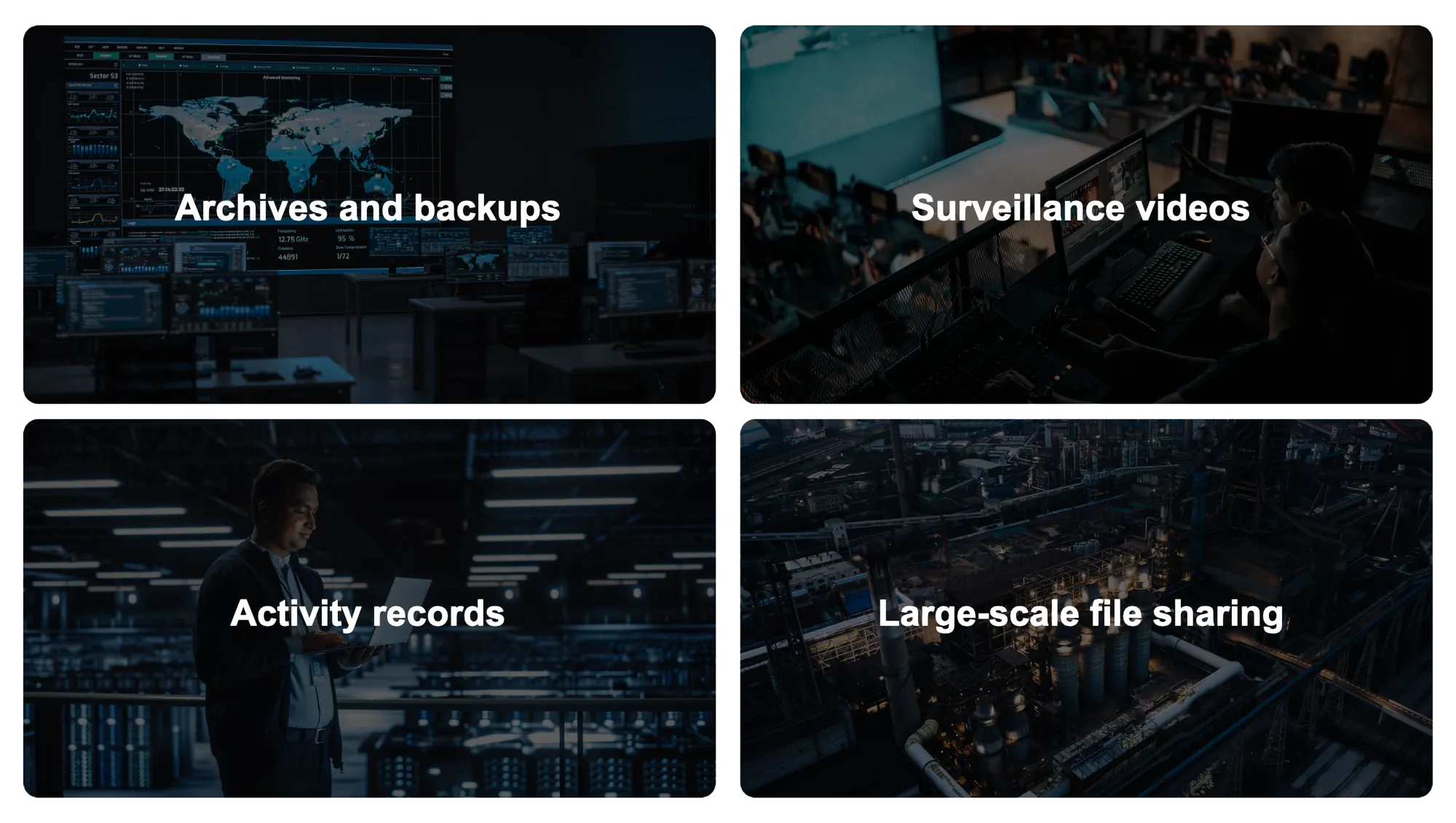
Unlike their already existing scale-up solutions in both DS and RS/FS/HD segments, they increase capacity by adding resources to a single system, while data services remain dependent on one host. Now, the new GS solution is a member of a scale-out architecture that clusters multiple GS nodes together. This way, by adding nodes, we not only expand capacity, but also enhance performance and reliability—making it ideal for large-scale or long-term data growth.
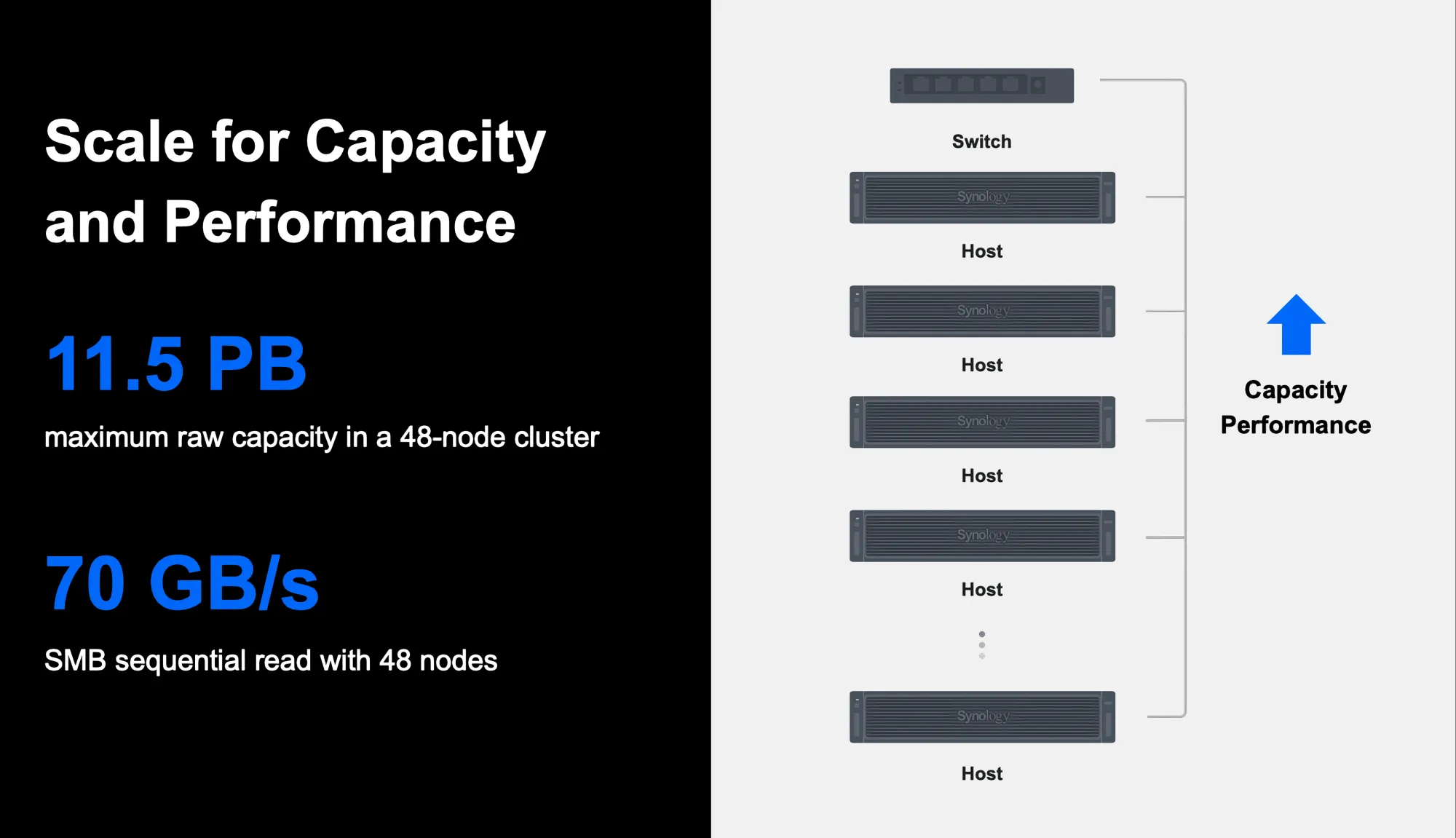
A single GS3400 cluster can support up to 48 nodes, offering up to 11.5 petabytes of raw capacity, as well as delivering up to 70 GB/s sequential read speeds via SMB protocol. So whether there is a need for more space or higher throughput, businesses can expand flexibly as needed.
" GS lineup focuses on four core values: Highly flexible scalability, support for both file and object storage, enterprise-grade reliability for data integrity, and simplified storage management
The GS lineup is driven by S3 API to manage the unstructured object storage needs, but it also offers standard SMB and NFS protocols for common file storage business operations.
As expected, Synology builds a custom OS for each new major line of devices. We saw that with DSM, SRM, BSM, and a custom UC DSM version. The same logic is present in both new series as well. The GS models are powered by the new GridStation Manager (GSM) that offers scalability, on-premises file and object storage, as well as reliability and simplified management. It also delivers the same intuitive experience as DSM, while meeting the specific needs of enterprise environments.
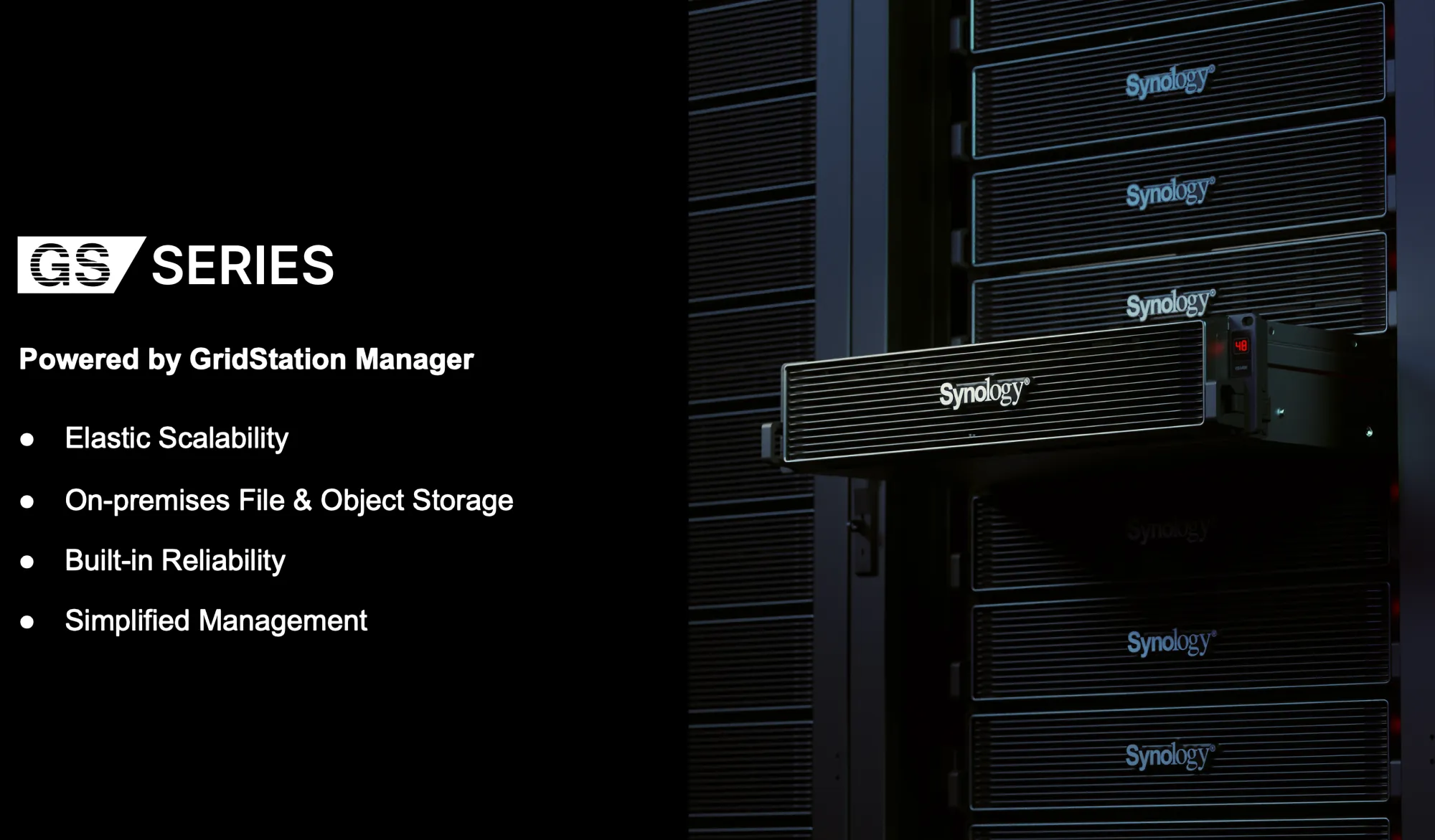
Speaking of reliability, it is important to mention that the GS series offers both high availability and data protection mechanisms. Within the cluster, nodes work together to ensure non-disruptive system upgrades and automatic failover, keeping services running smoothly. On top of that, the distributed architecture uses redundant blocks with encoding algorithms across different nodes in the cluster. As a result, even if an entire node fails, the system can reconstruct data from the remaining pieces while still ensuring data integrity.
Being a Synology product, the GS also includes built-in snapshot and backup features, helping enterprises prepare for unexpected events.
High-performance, high-efficiency enterprise workloads
Opposed to the new massive unstructured data system, such as a Grid Station, Synology also introduced another member of the data storage segment engineered for primary enterprise use cases. This is their first all-NVMe storage solution, called PAS7700.
Being Synology's most powerful flashship to date, there is much that this new model and platform bring to the table.
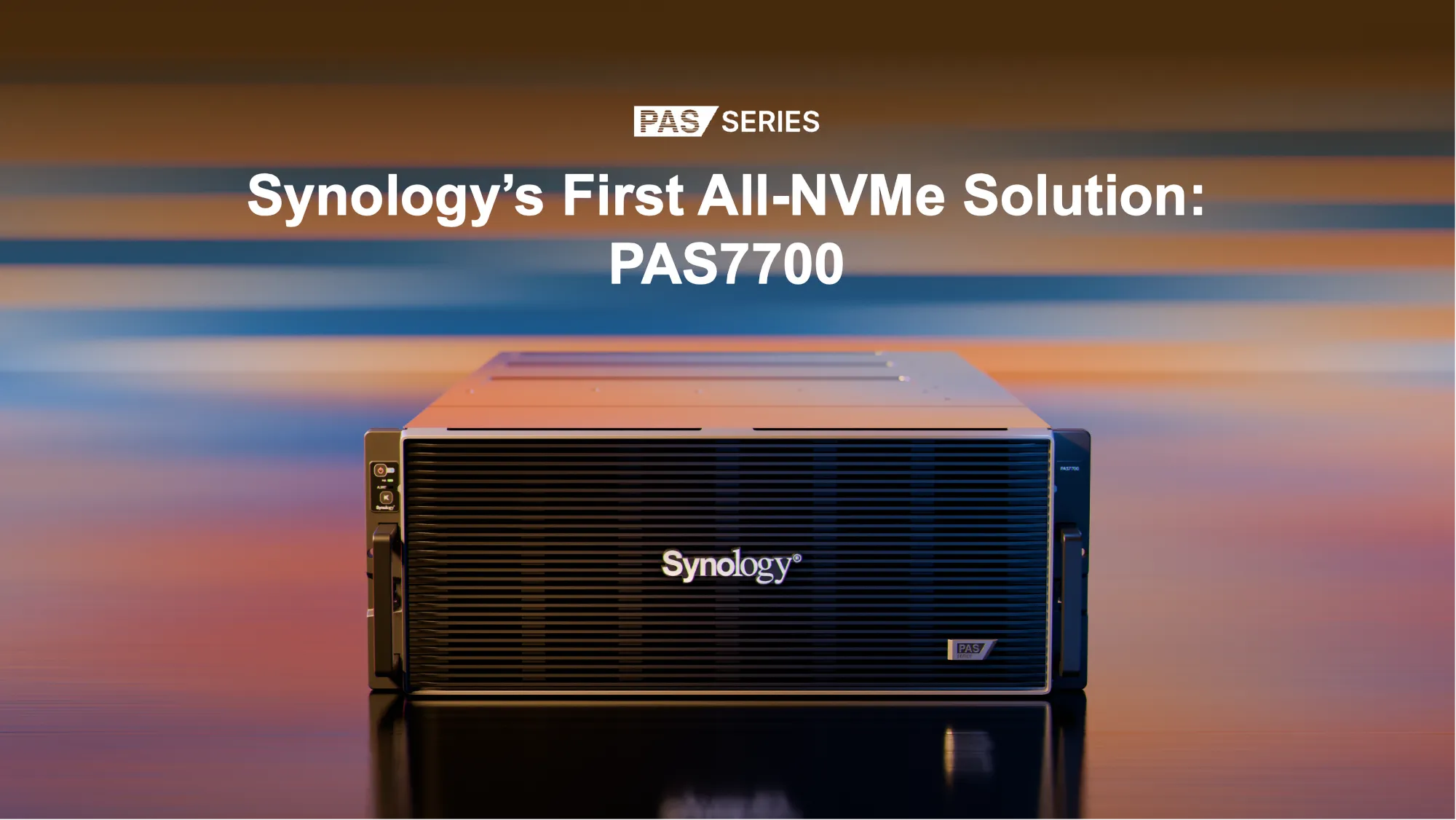
The PAS-series was developed to support mission-critical operations that must meet extremely high performance standards and ultra-low latency requirements, while also ensuring high availability at all times.
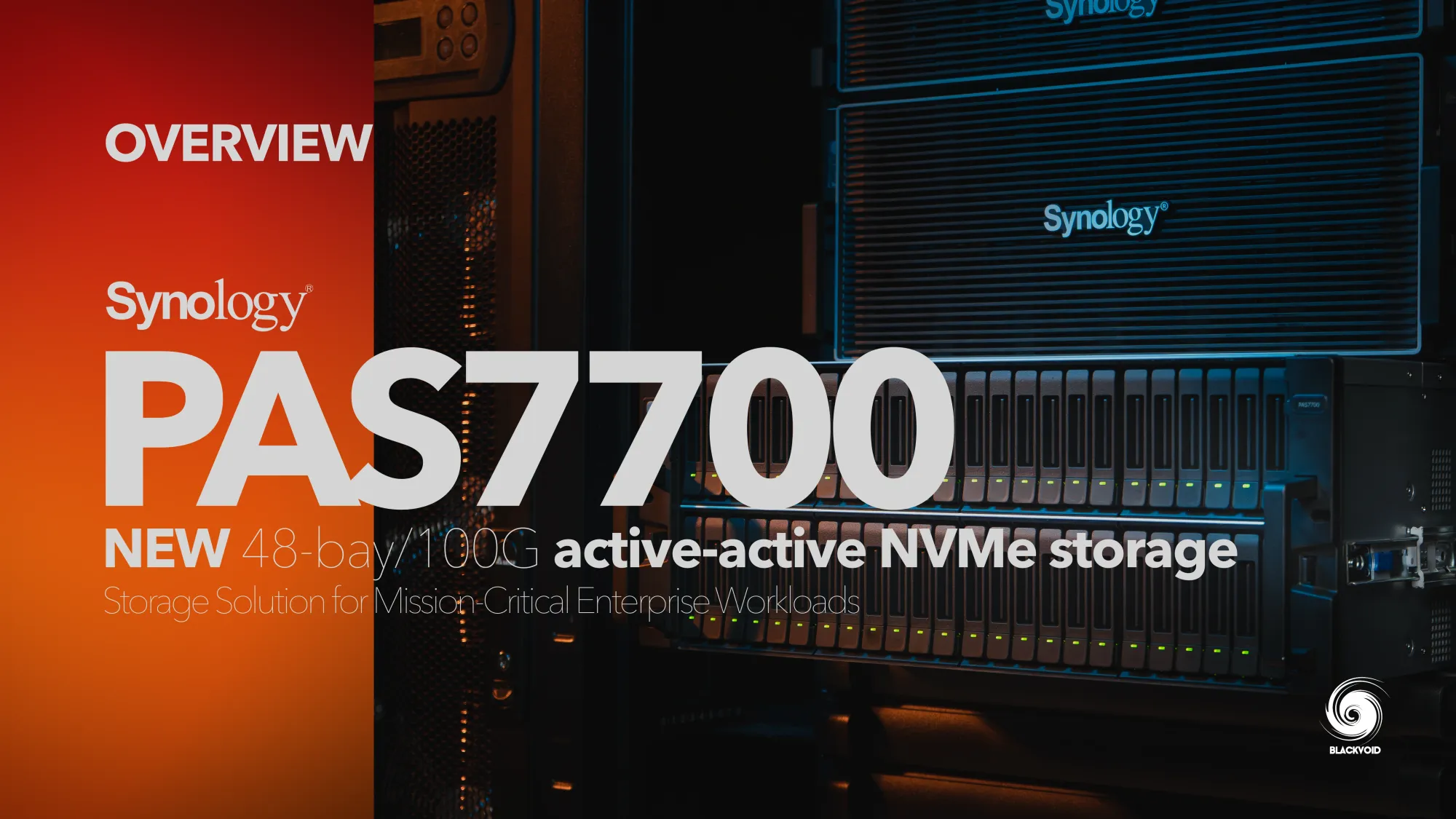
To support critical business applications, like high-speed containerized environments, virtual machines, large-scale databases, and EDA tools in the semiconductor industry, PAS7700 integrates robust hardware and software capabilities to handle massive real-time I/O demands while ensuring consistent performance and system stability.
Unlike the current devices from Synology, the PAS series is unique with an all-end-to-end NVMe architecture equipped with U.3 SSDs directly connected to the CPU via PCIe lanes.
The network side of things offers up to four 100GbE or twelve 25GbE interfaces. But on top of that, the solution is built around NVMe over Fabrics (so-called NVMe-oF), protocols designed from the ground up for NVMe, streamlining the entire data access path to unleash the full performance potential.

With this architecture, PAS7700 can deliver over 2 million 4K random read IOPS, up to 30 GB/s sequential read throughput, and sub-millisecond latency. Performance rivaling industry-leading high-end storage systems.
This system is not just impressive from a hardware standpoint, but it also elevates with enhanced security capabilities, by building on already existing features present in the DSM system, like secure sign-in, encryption, and backup, but also introduces new features designed to meet the specific needs of enterprises, namely, network isolation and support for self-encrypting drives (SEDs).

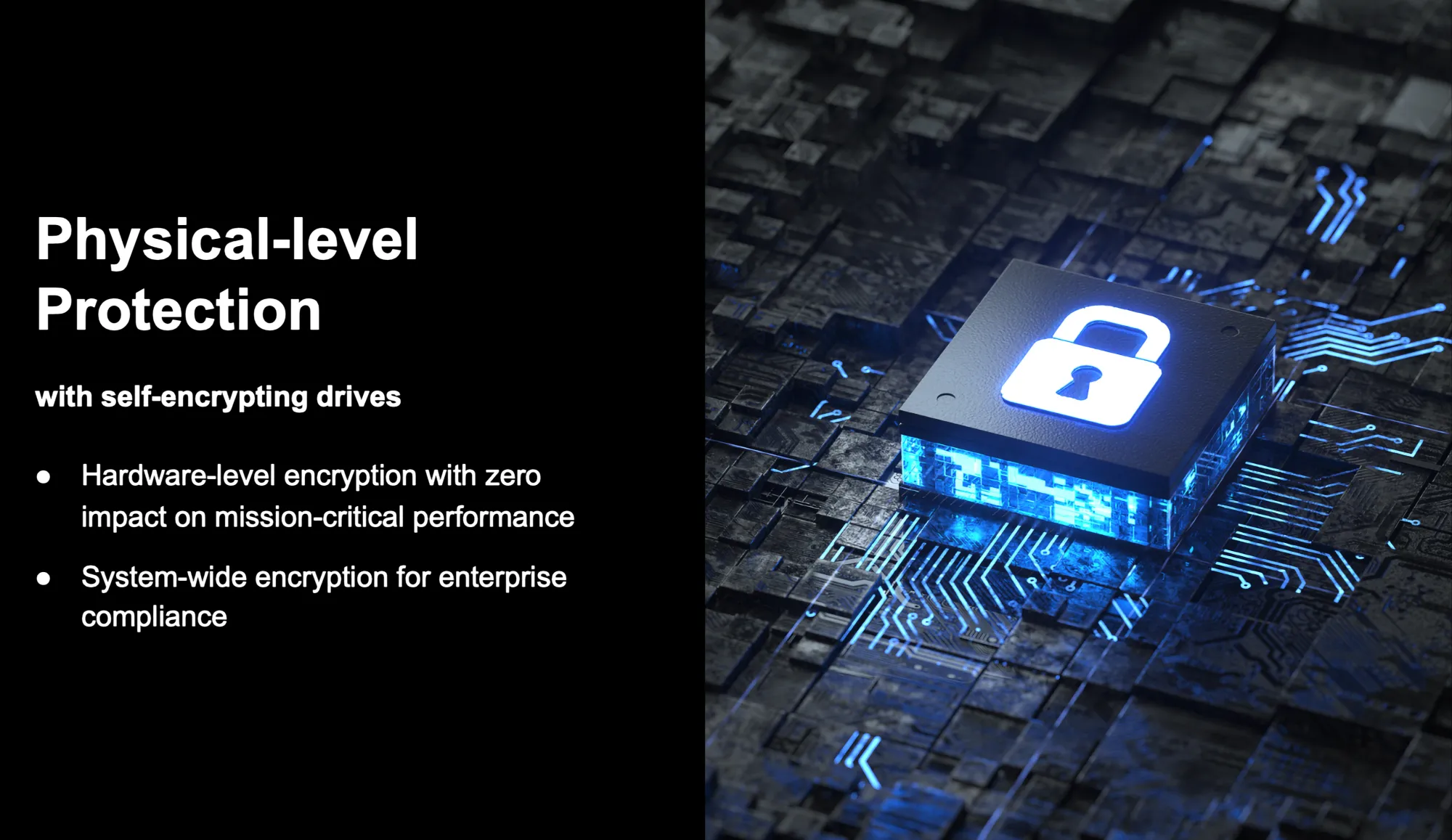
What this means is that PAS7700 offers physical and virtual (VLAN) network separation of both management and data access interfaces, allowing for better access and security control. Along with that, it also introduces hardware-level encryption through SED (self-encrypting drives) support. SEDs provide zero performance impact while offering system-wide protection, helping enterprises meet compliance and security standards without trade-offs.
Aside from the hardware elements of these systems, Synology is also focusing on service availability. It is because of this that PAS models feature an active-active dual controller architecture, with full failover mechanisms across storage, networking, and control layers.
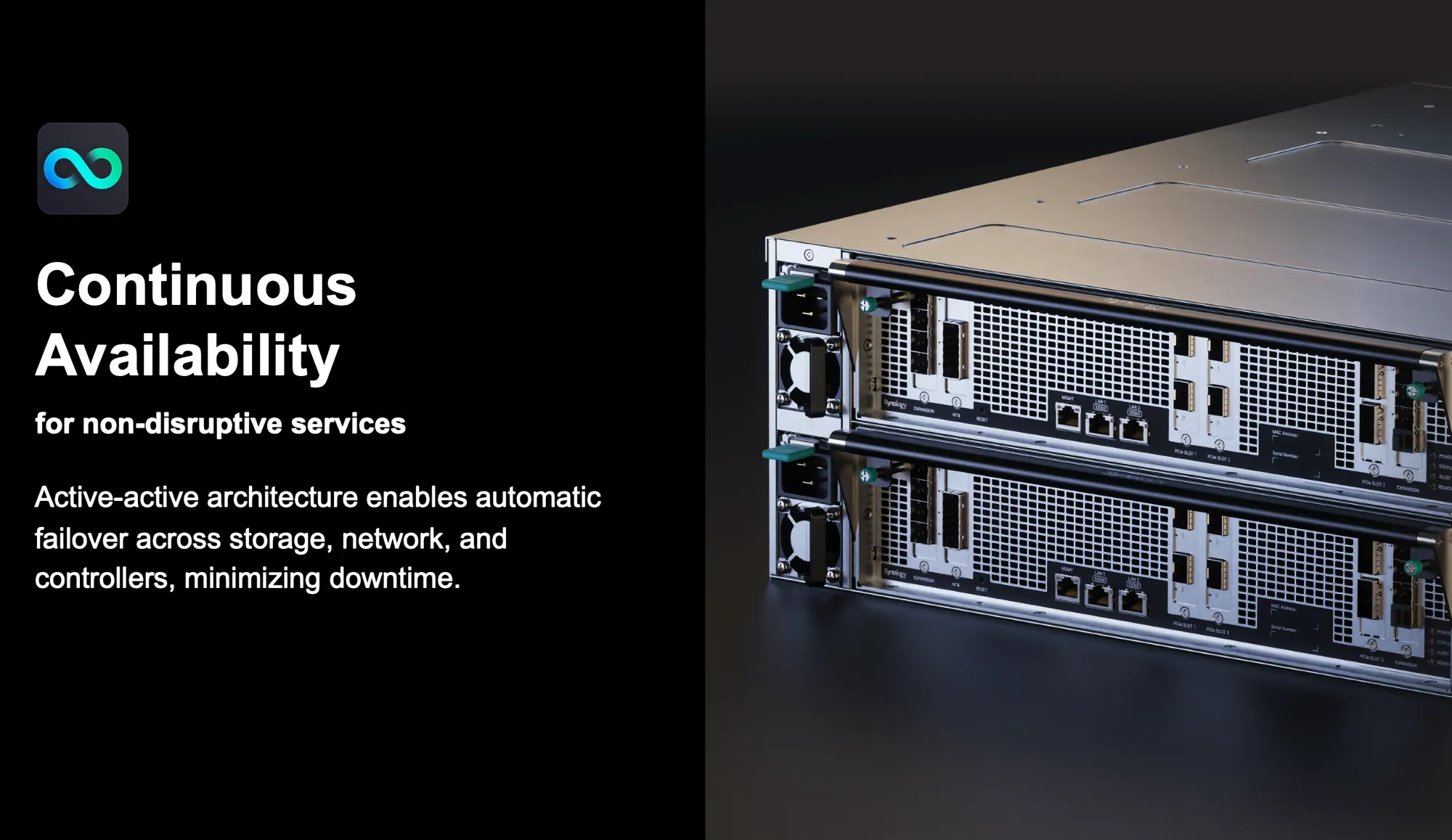
Now, all of this is possible with a dedicated OS. Just like with the new GSM (GridStation Manager), the PAS models are powered by the new PAM OS (Parallel Active Manager).
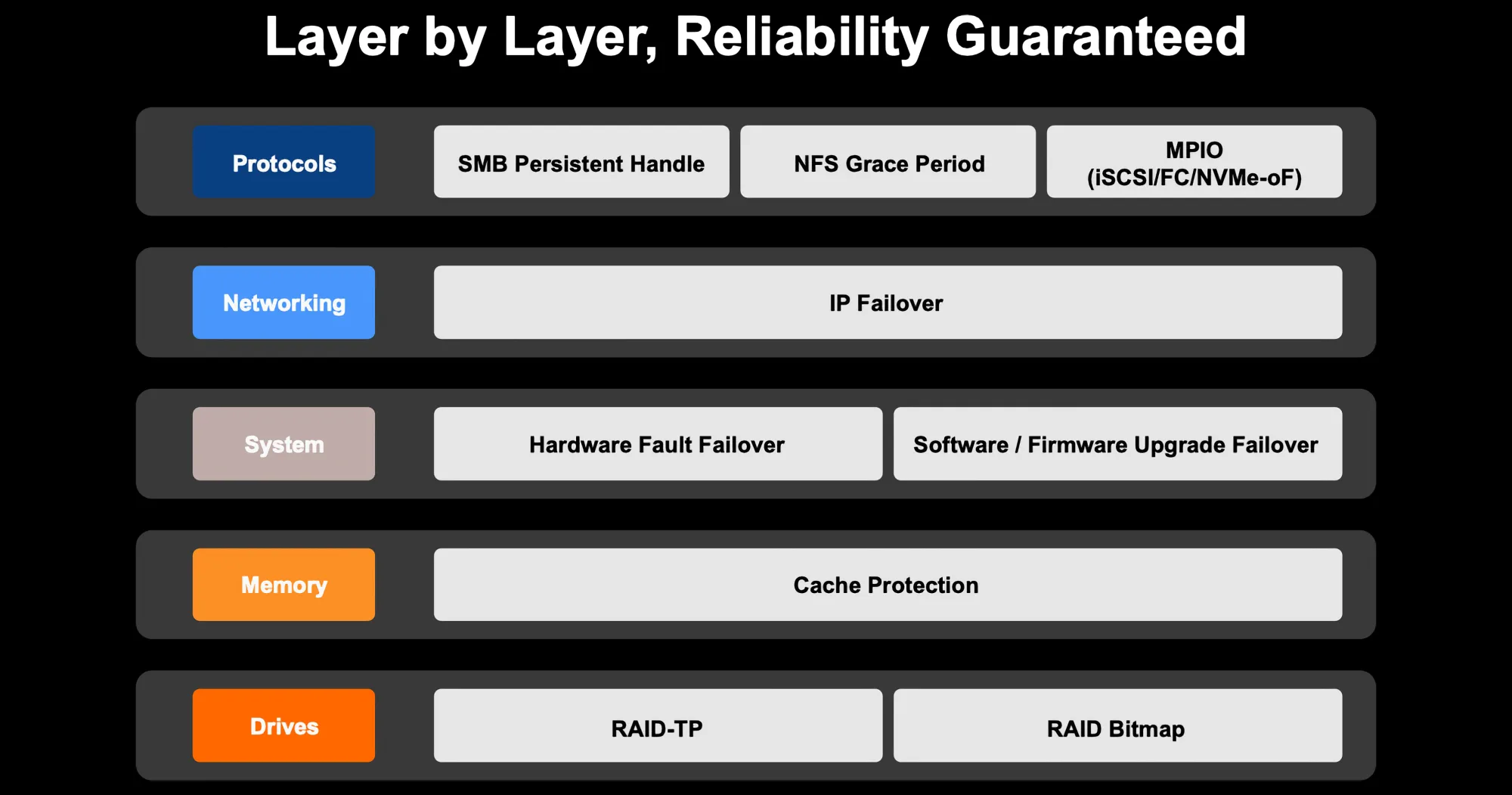
Starting with the disk and raid layer, the PAS systems support RAID-TP for triple-disk redundancy—offering higher fault tolerance than traditional RAID 5 or RAID 6. It also uses RAID Bitmap technology to speed up recovery after failover. This tracks only changed data blocks, enabling faster resync without rebuilding the entire array, reducing downtime and risk.
Followed by memory and system reliability, a dual-controller setup protects data that hasn't yet been written to the drives. To achieve that, the PAS uses cache protection that synchronizes memory between controllers. Should one fail, the other still holds the data and completes the write process, ensuring zero data loss. At the system level, PAS7700 enables seamless failover during firmware upgrades or controller failure, maintaining service continuity through a high availability design.
Near the very top of the architecture, we have network and storage protocols. PAS models support IP failover for continued network access along with several protocols and features such as SMB persistent handle, NFS grace period, and MPIO for iSCSI, FC, and NVME-oF.
As a result of these implementations, PAS client devices can reconnect automatically or switch data paths without disruption, even during hardware failure.

We can expect both PAS and GS models to arrive on the market in H1 of 2026, offering a more complete storage portfolio tailored to a wide range of enterprise needs.
Synology Tiering
While the PAS and GS models were stars of the show, Synology has also been working on other features that will be implemented in existing systems as well, such as Synology Tiering.
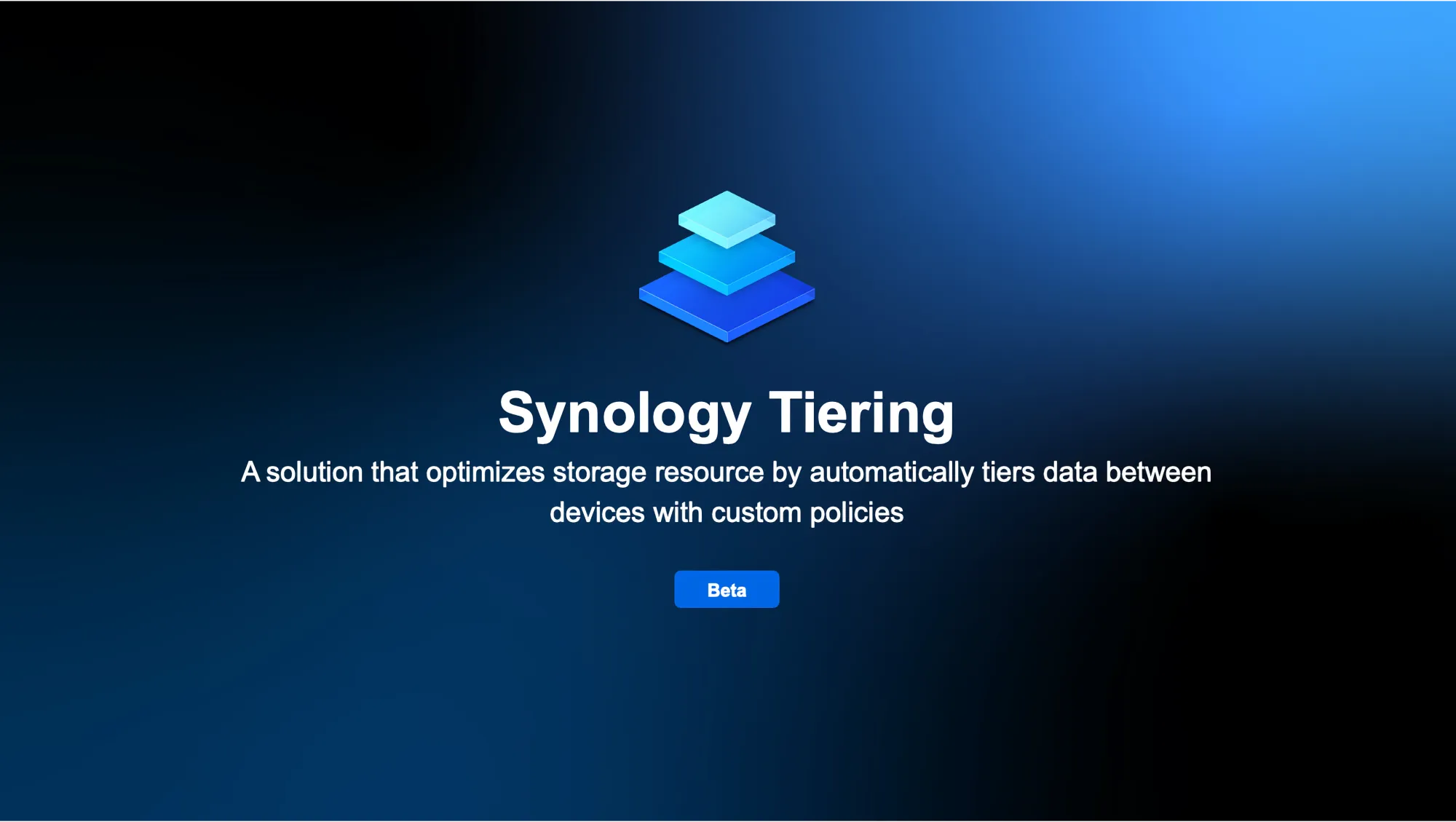
The idea behind this feature is driven by a simple fact that a single storage device will eventually reach its limits. While DSM can achieve up to a 5:1 reduction ratio with deduplication and compression, as well as thin provisioning at a block level, making block storage spaces like LUNs more flexible, the fact is that businesses need a solution to help with the growing needs without adding more and more hardware.
This is where tiering features come in. Hot data that’s frequently accessed can be stored on high-performance SSDs to ensure operational efficiency, while cold data that’s rarely used can be moved to cost-effective HDDs, saving overall costs and resources.
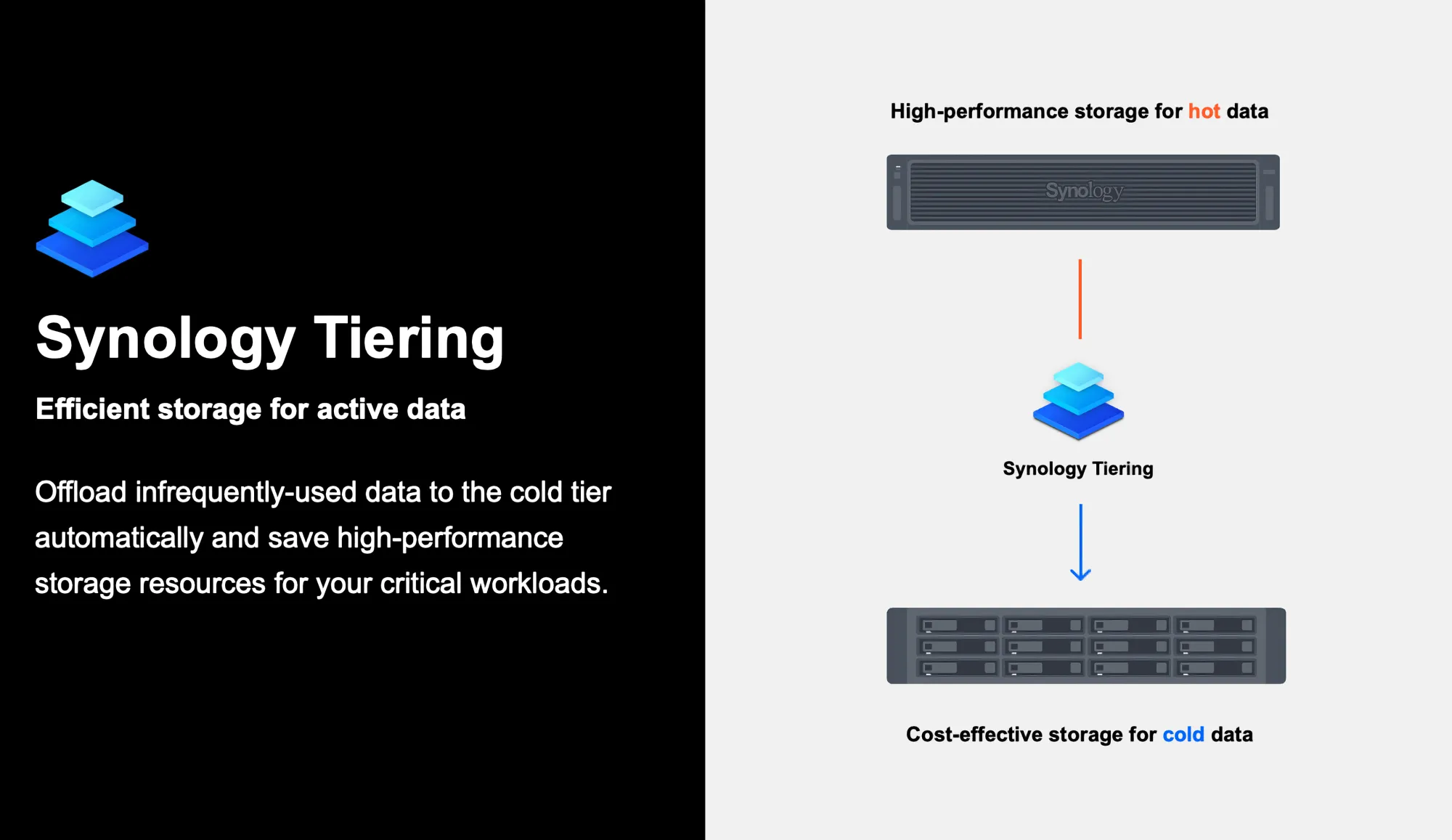
Synology Tiering automatically moves infrequently accessed data to cost-effective storage, freeing up high-performance resources for critical tasks. Data can be seamlessly retrieved from hot storage when needed. This automation follows user-defined rules and schedules. This means that files in a specific folder untouched for a certain period can be moved during the next scheduled transfer.

Regardless of where data is stored, Synology's built-in backup or redundancy tools, like High Availability and Hyper Backup, ensure consistent protection. High-availability setups can further protect hot storage, minimizing RTO and RPO for hot data, balancing efficiency and security.
Data Protection with ActiveProtect
Moving now from data storage models into data protection, Synology also had a lot to show, namely, their recent rollout of DP devices. The DataProtection models currently cover three (with a few more coming later on) devices, both rack and desktop-oriented.

ActiveProtect units were first presented during the 2024 Computex expo back in June, with their official debut just before the year ended in December.
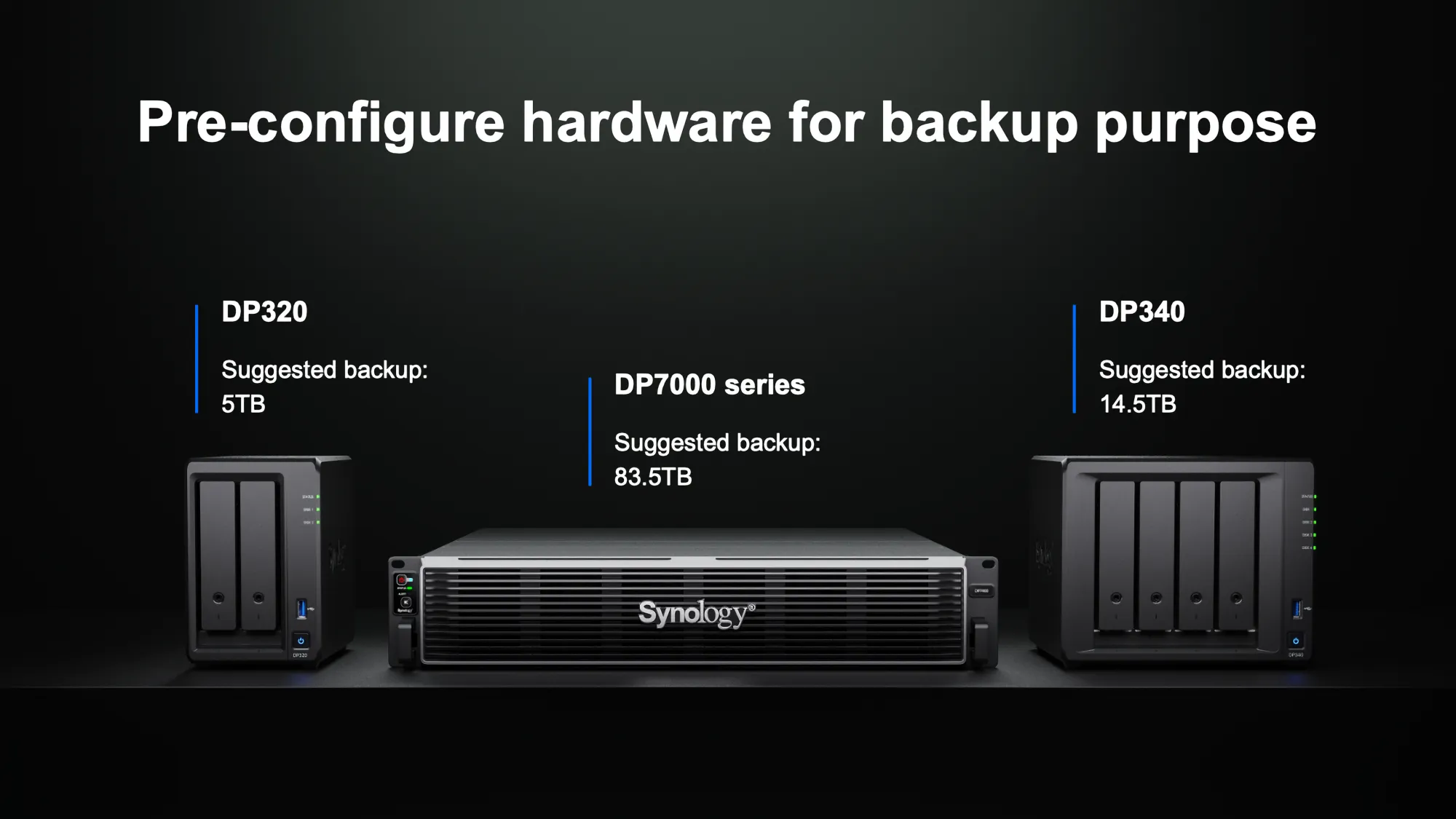
Focusing on being a central turn-key backup solution, the DP models are designed to help businesses with modern demands in both protection and in general cyber resiliency when it comes to corporate data.
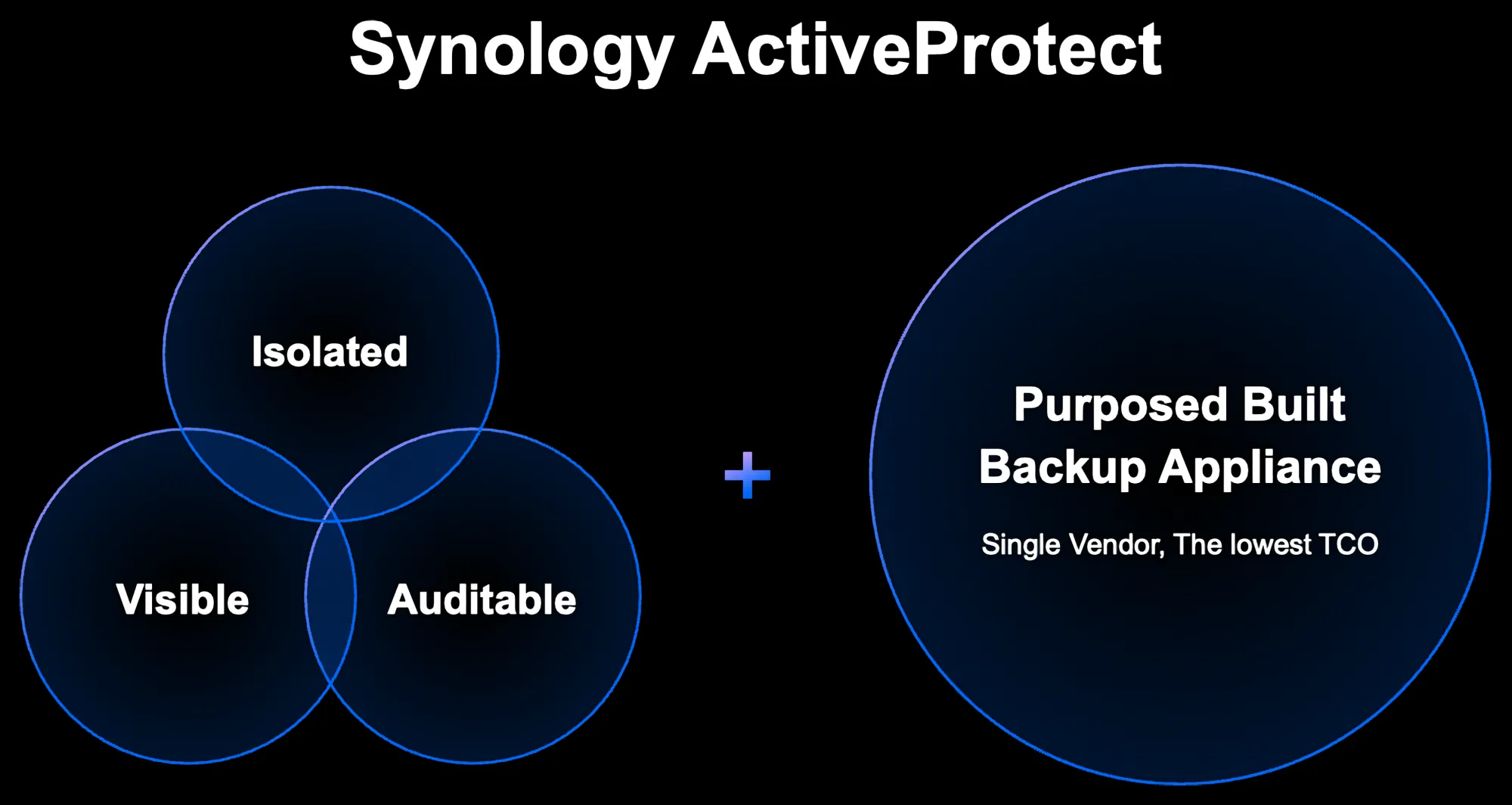
Being both simple as well as a powerful, compared to other solutions out there, it can save up to 70% in overall costs.
For a more in-depth look and feel of the platform and the hardware, read up on all the #activeprotect articles here on the site.
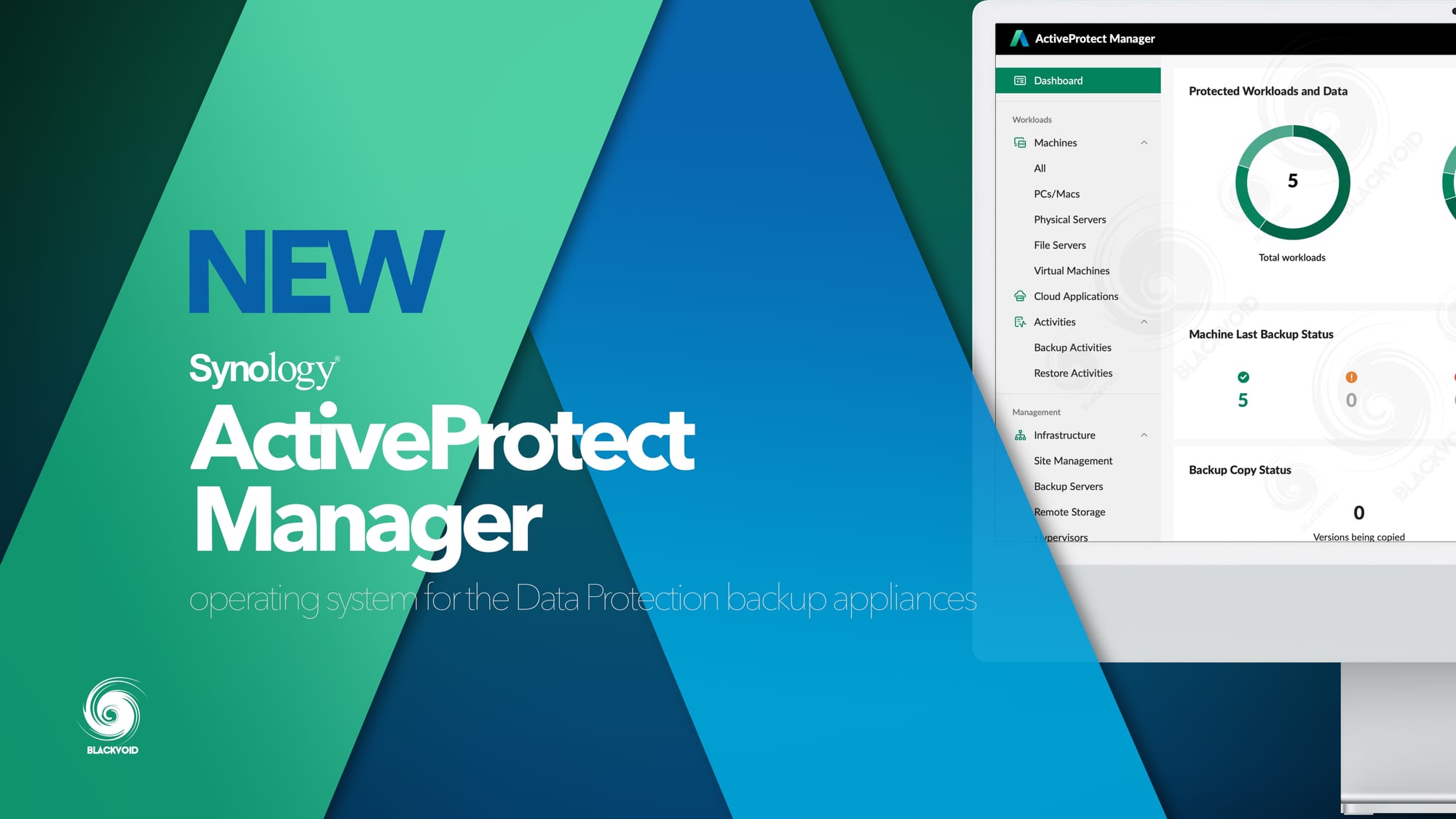

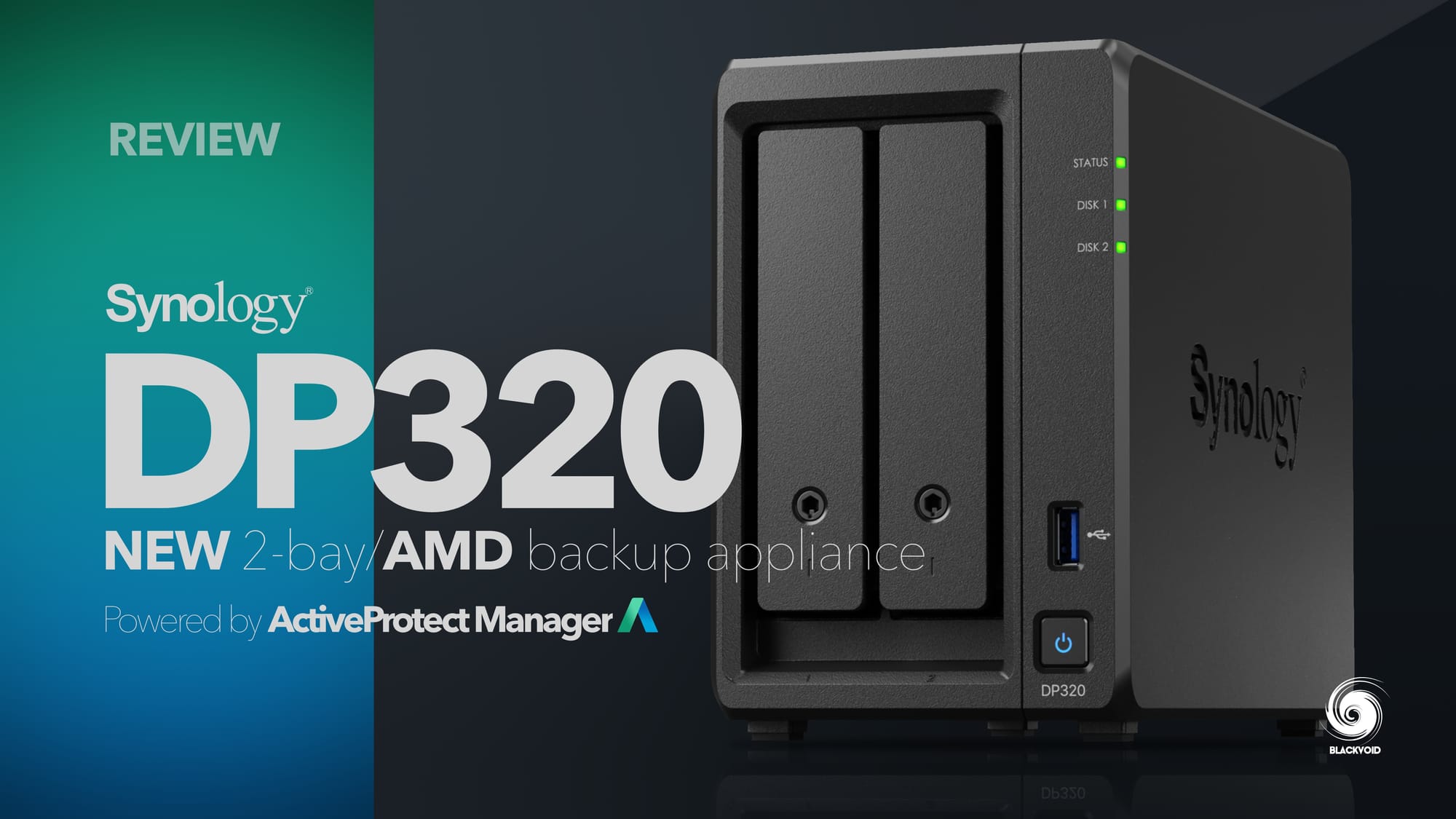

Surveillance
Another part of Synology's business is surveillance. It has been for a long time, and in the past years, the company has invested a lot of resources to bring some new solutions to the market, both software and hardware-wise.
Because of this, the Solution Day expo had new and upcoming devices to show, as well as some soon-to-be available platforms.
Starting with the hardware side, Synology has already launched three proprietary camera models that were originally announced back in October of 2022.
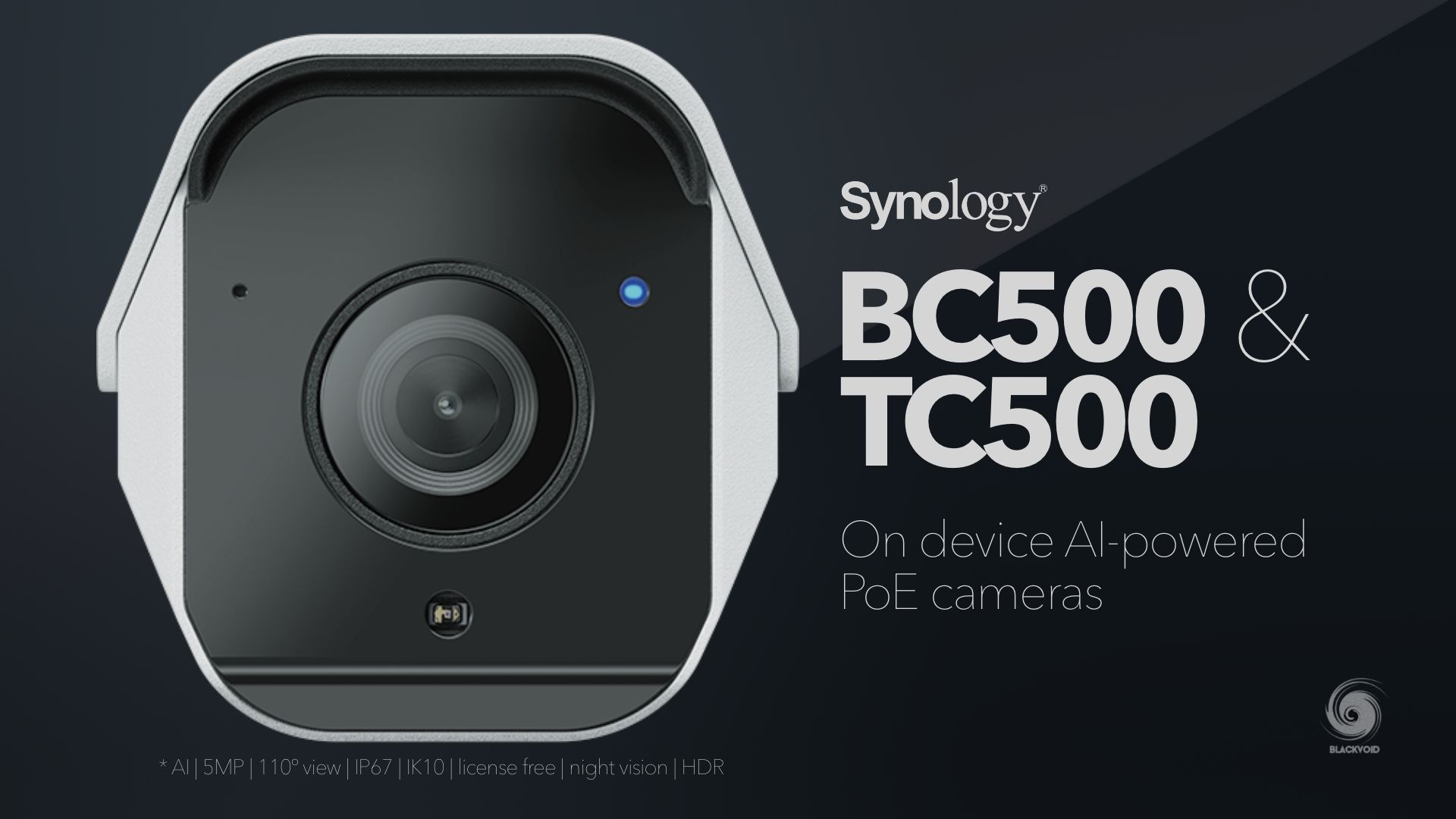

The BC500, TC500, and the recent CC400W. Because both BC and TC models are PoE powered, as well as two new upcoming cameras, Synology also introduced new PoE switches. In cooperation with NETGEAR, the company presented three new models, two of which are L2 managed ones.

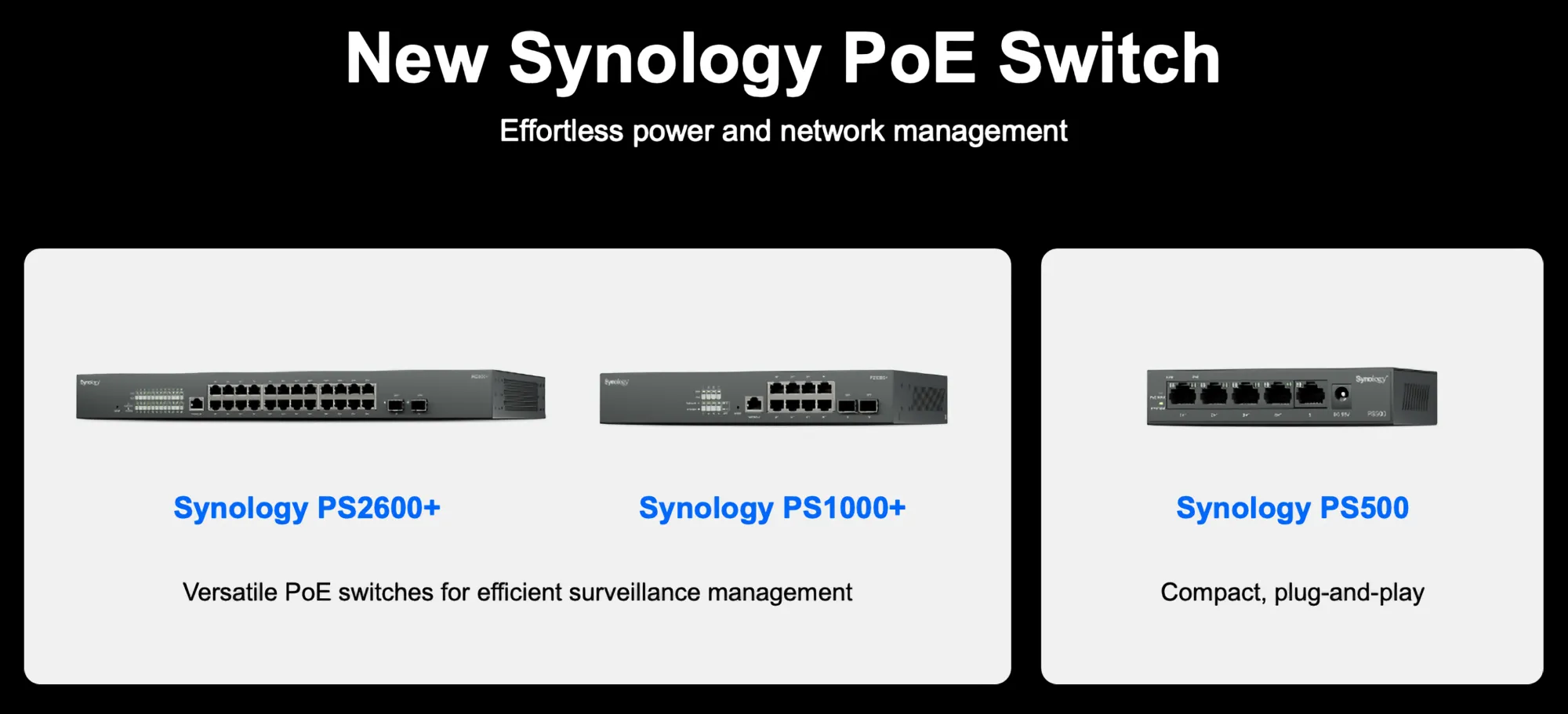




While one would expect those switches to be for general use, that is not the case. The company decided to lock them down with their Surveillance Station platform only. On that topic, the integration is so tight that management of said switches will be possible from within the SS environment.

Some highlight features for the 10-port model as advertised by Synology:
• Compact 10-port PoE+ switch for Synology Surveillance Station
• High-performance Layer 2+ managed switch
• Ideal for smaller surveillance systems
• Direct management in Synology Surveillance Station
• High energy efficiency and reliable power supply for PoE devices
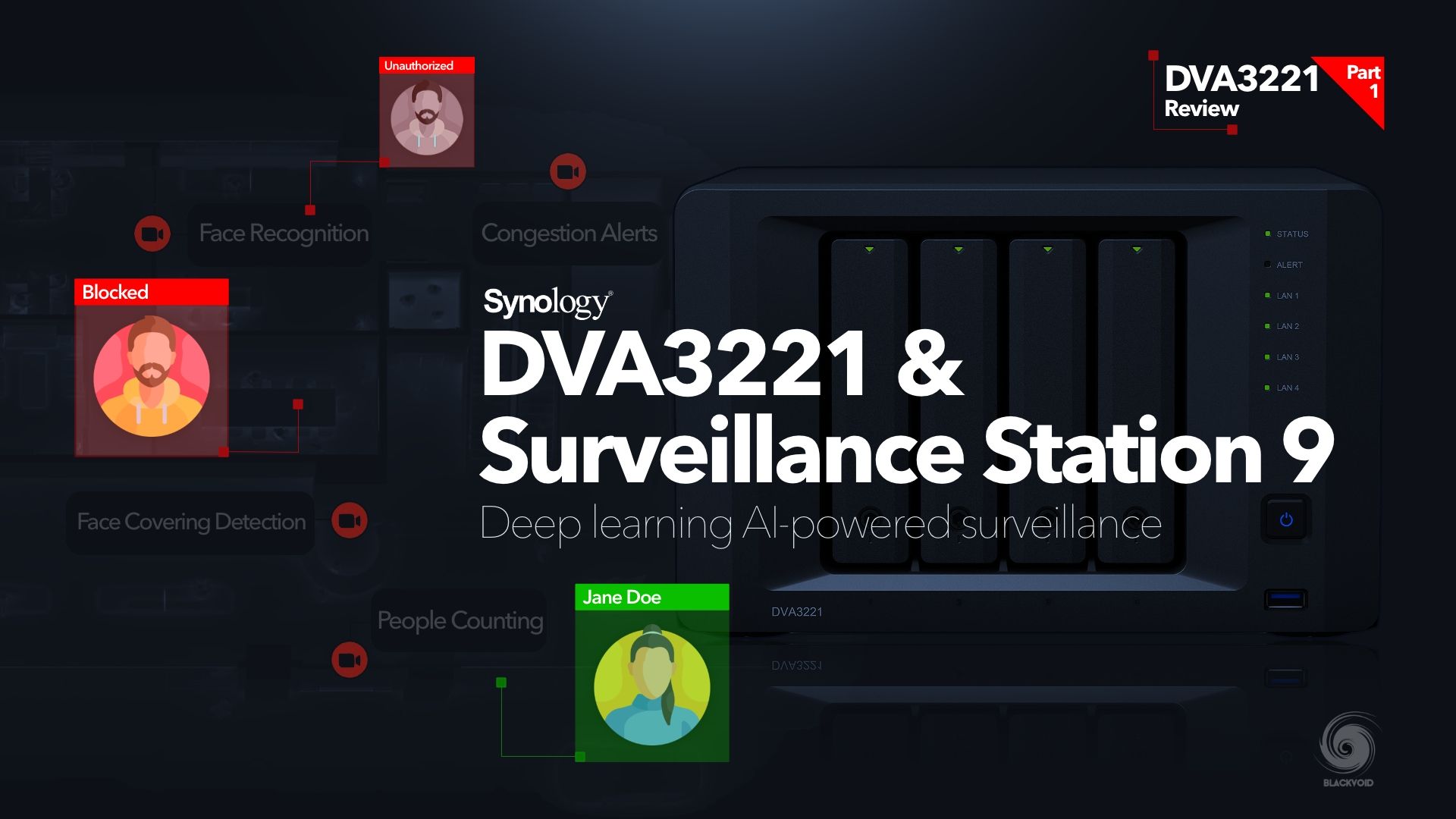
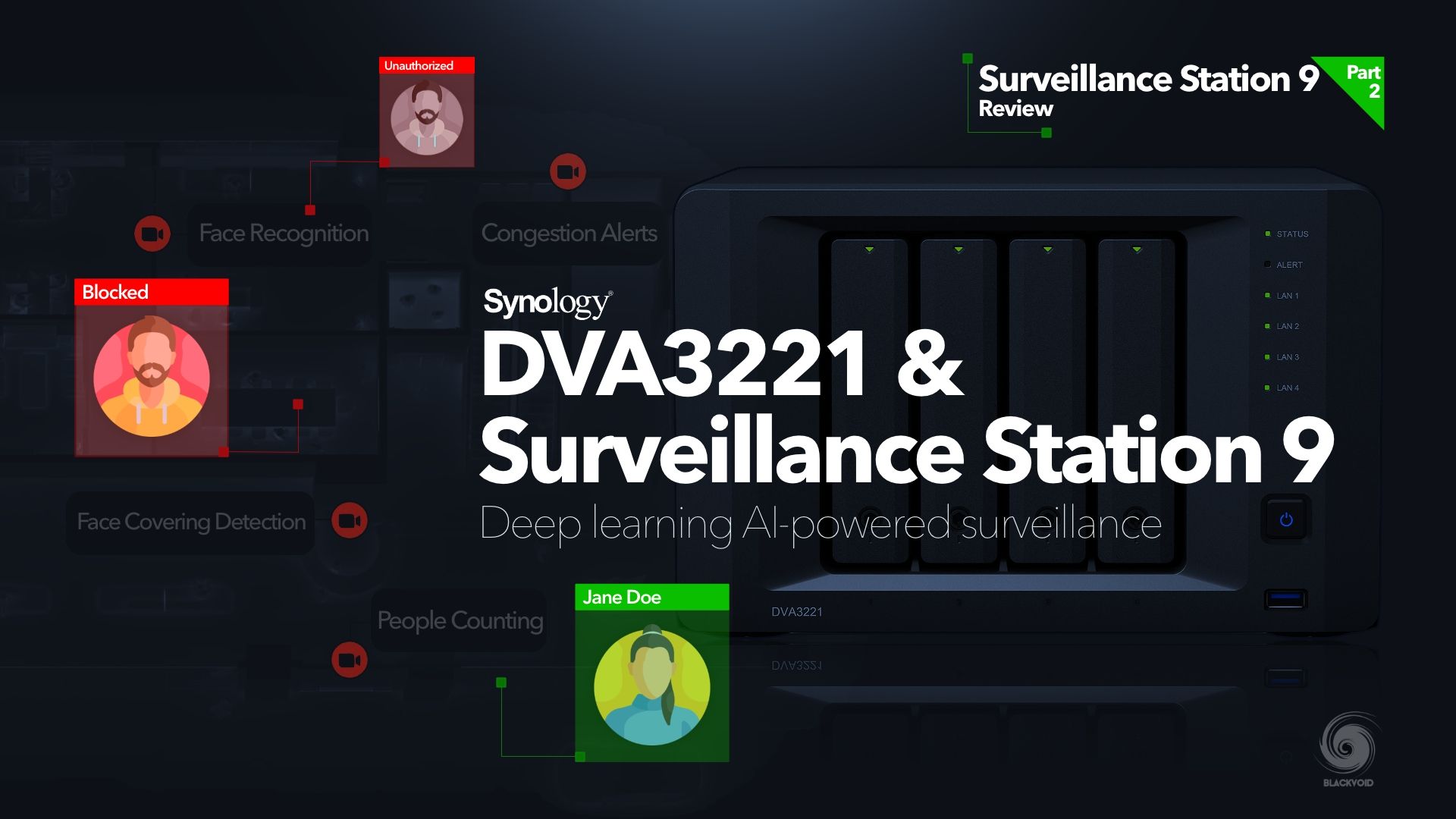
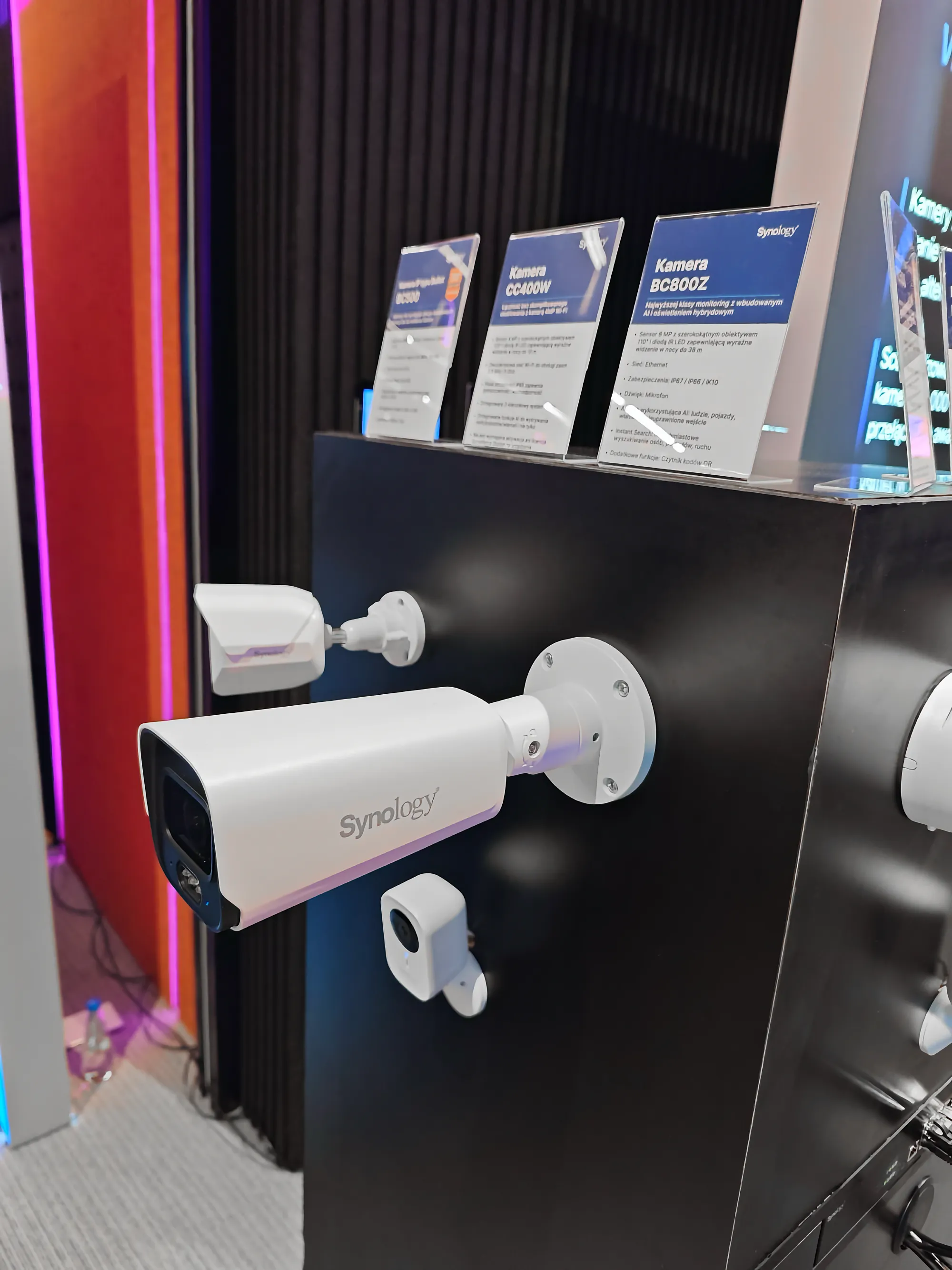
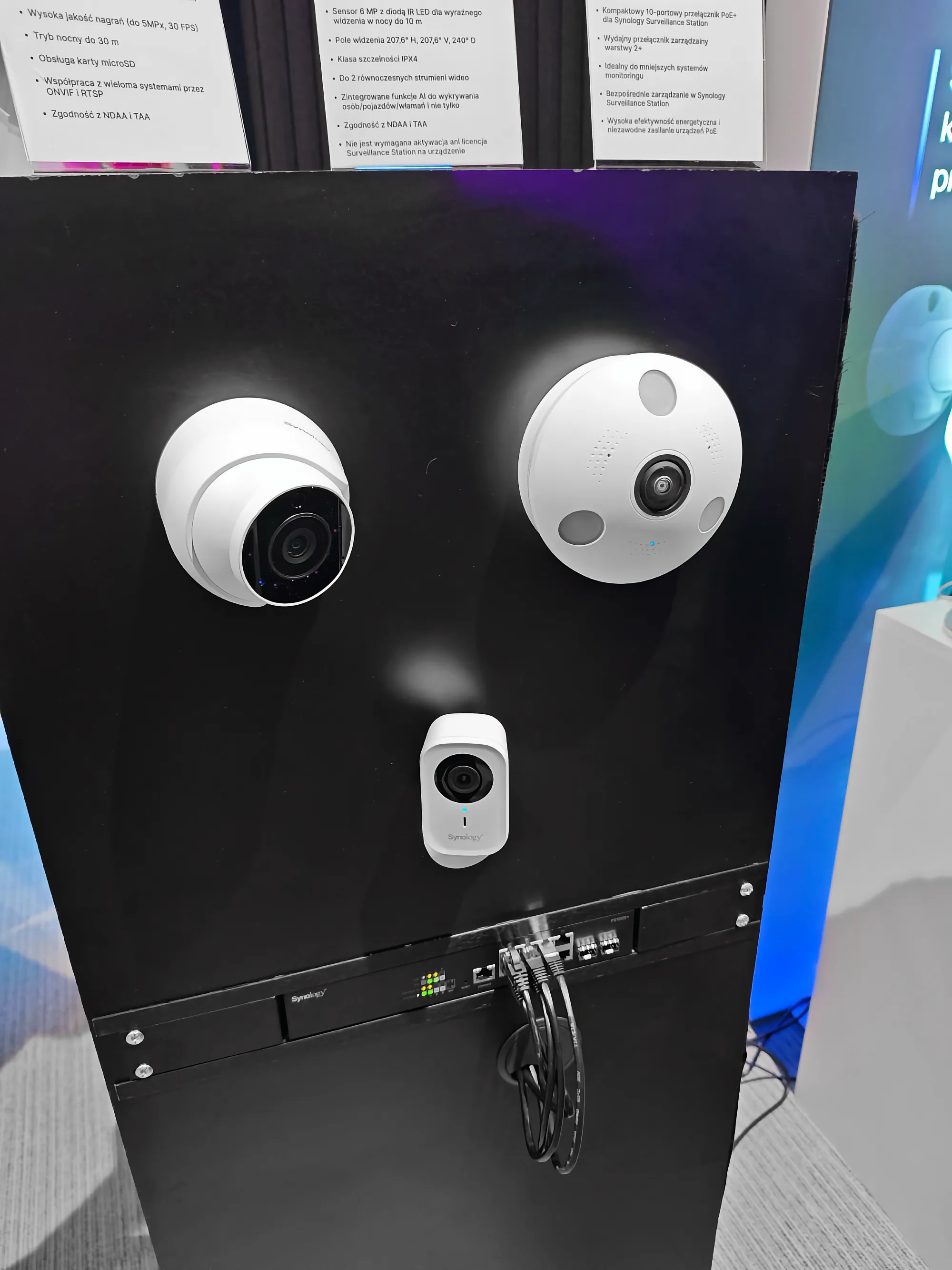
Solution Day 2025 camera exhibit presenting some new upcoming cameras like the BC800Z and FC600 as well as a new 10-port PoE switch
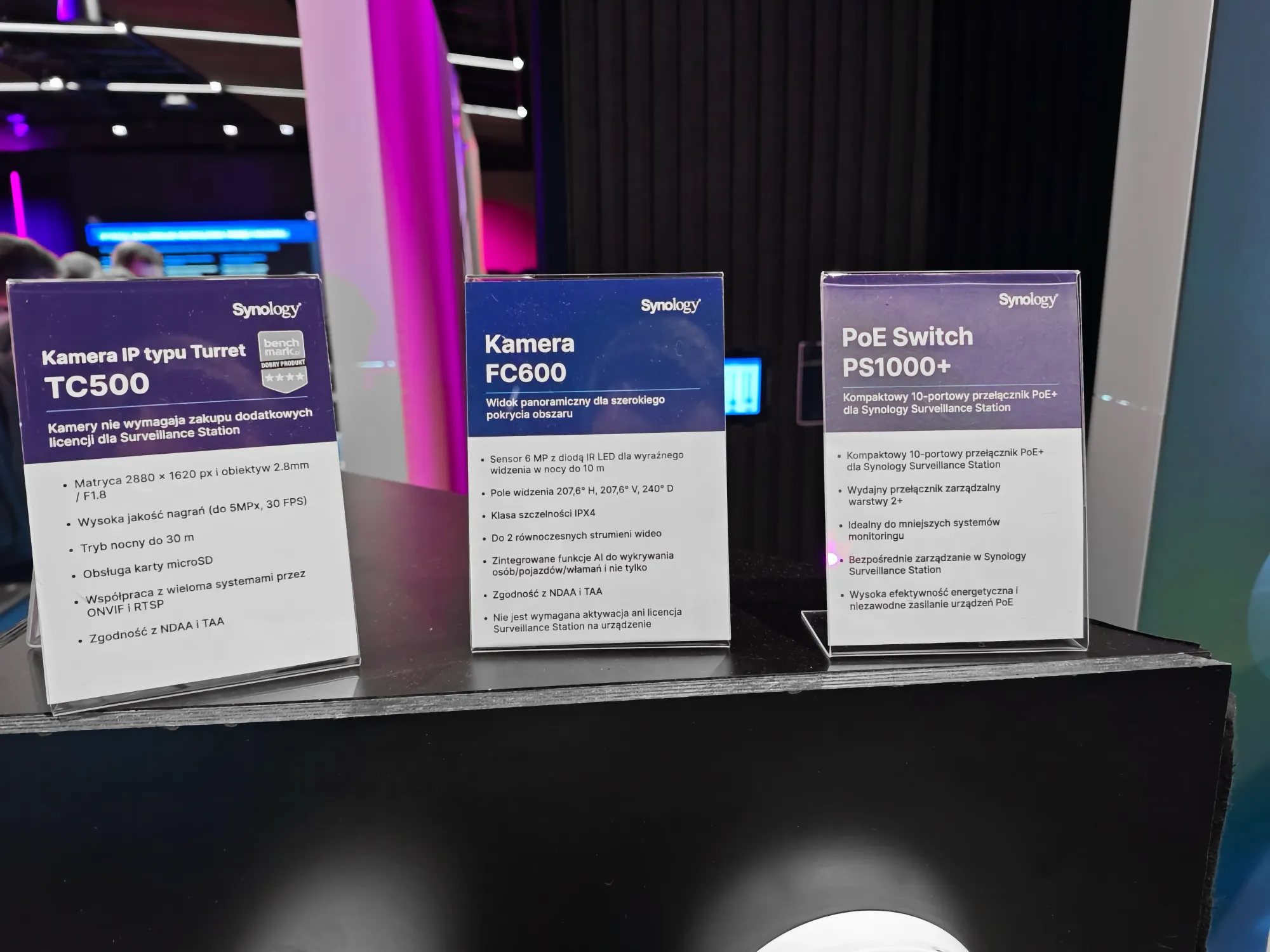
Apart from the new switches and existing camera models, Synology also showcased two new PoE cameras, namely the new bullet model BC800Z, and a 360 fisheye model, the FC600.
In terms of features, the FC600 model is the new 6MP device with the following hardware overview capabilities:
• 6 MP sensor with IR LED for clear night vision up to 10 m
• Field of view: 207.6° horizontally, 207.6° vertically, 240° diagonally
• IPX4-rated water resistance
• Up to 2 simultaneous video streams
• Integrated AI features for detecting people, vehicles, intrusions, and more
• NDAA and TAA compliant
• No activation or license required
The BC800Z is a new 8MP/4K model:
• Field of view 110° and IR LED provide clear night vision up to 38 m
• Protection: IP67 / IP66 / IK10
• Built-in microphone
• AI-assisted detection for people, vehicles, intrusions, and more
• Instant Search
• Additional features: QR code reader
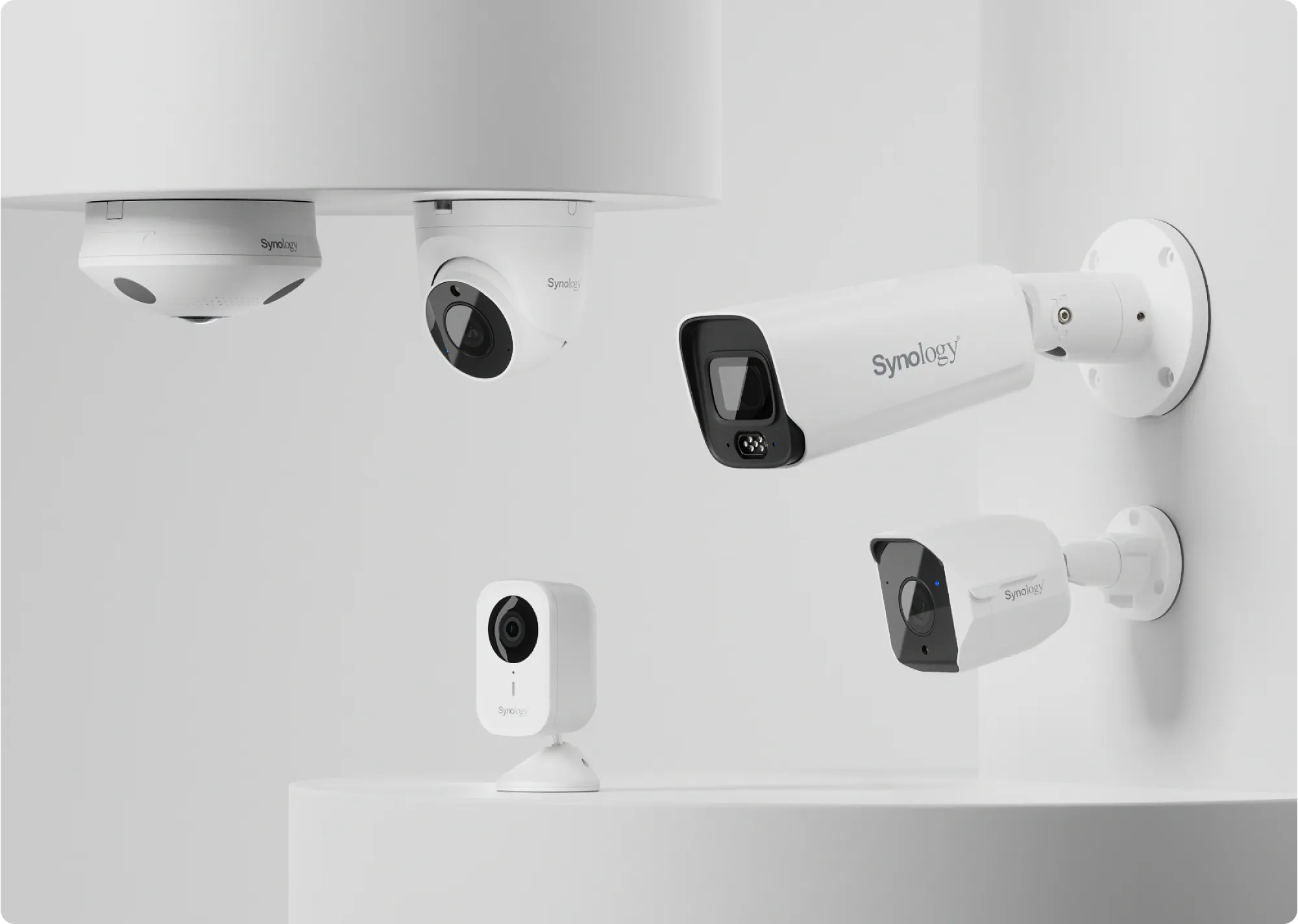
It is still unknown when the new models will arrive, but the first half of 2026 would be a safe bet. Surveillance highly depends on quality hardware, and with the introduction of new cameras and switches, Synology finished off by announcing a few new rack and desktop DVA devices.
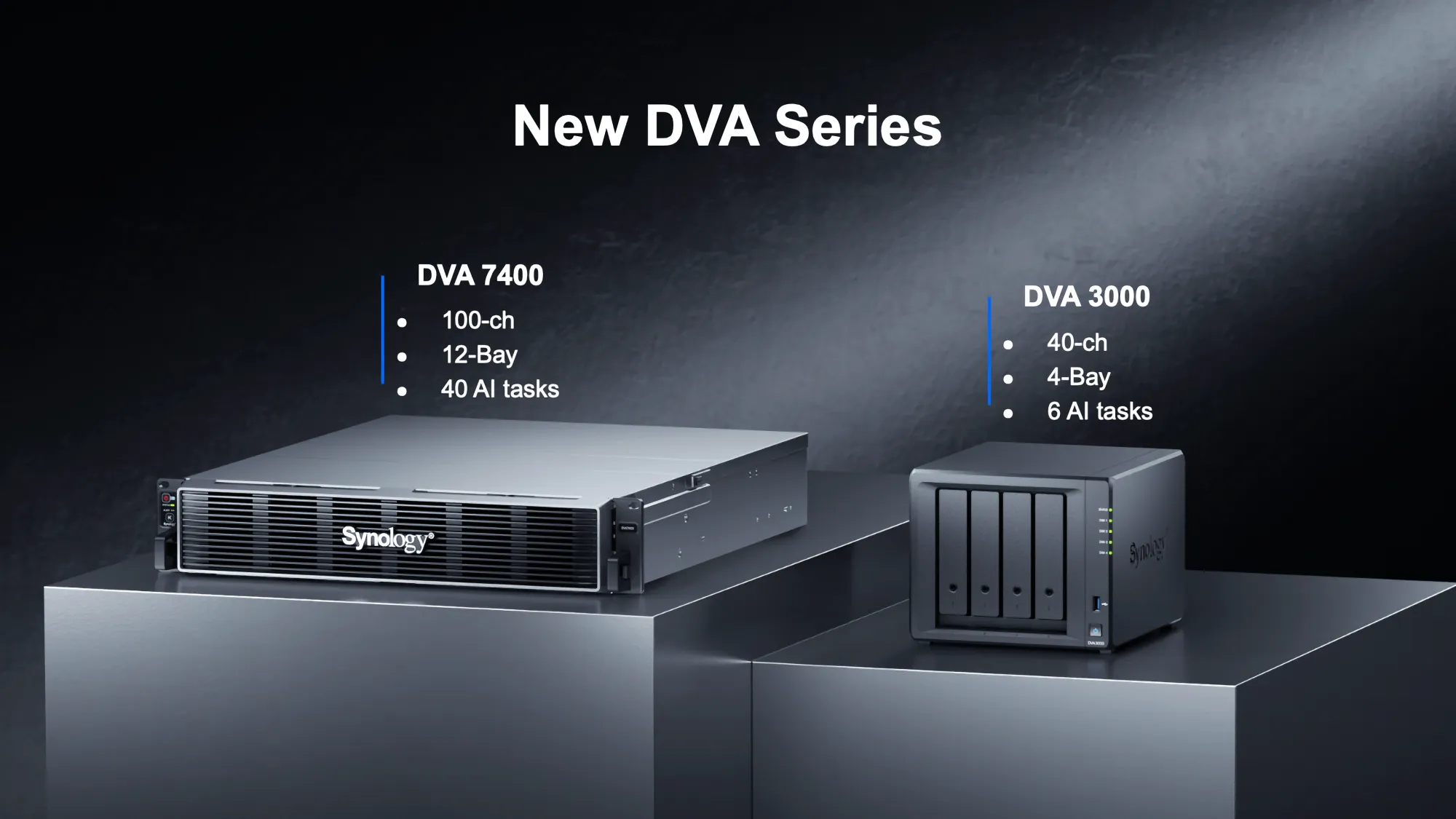
Alongside the existing DVA3221 and DVA1622 models, the new DVA7400 and DVA3000 devices are heavily AI-oriented. It is also the first 2-bay DVA unit that has a lot of potential, starting with a much larger storage space than any current desktop model.
It will also support up to 100 camera feeds and 40 analytic tasks, making it an ideal choice for large-scale deployments that require AI video analytics. The smaller 3000 model, mimicking probably the DS425+ model, will support up to 40 cameras and 6 parallel AI tasks.
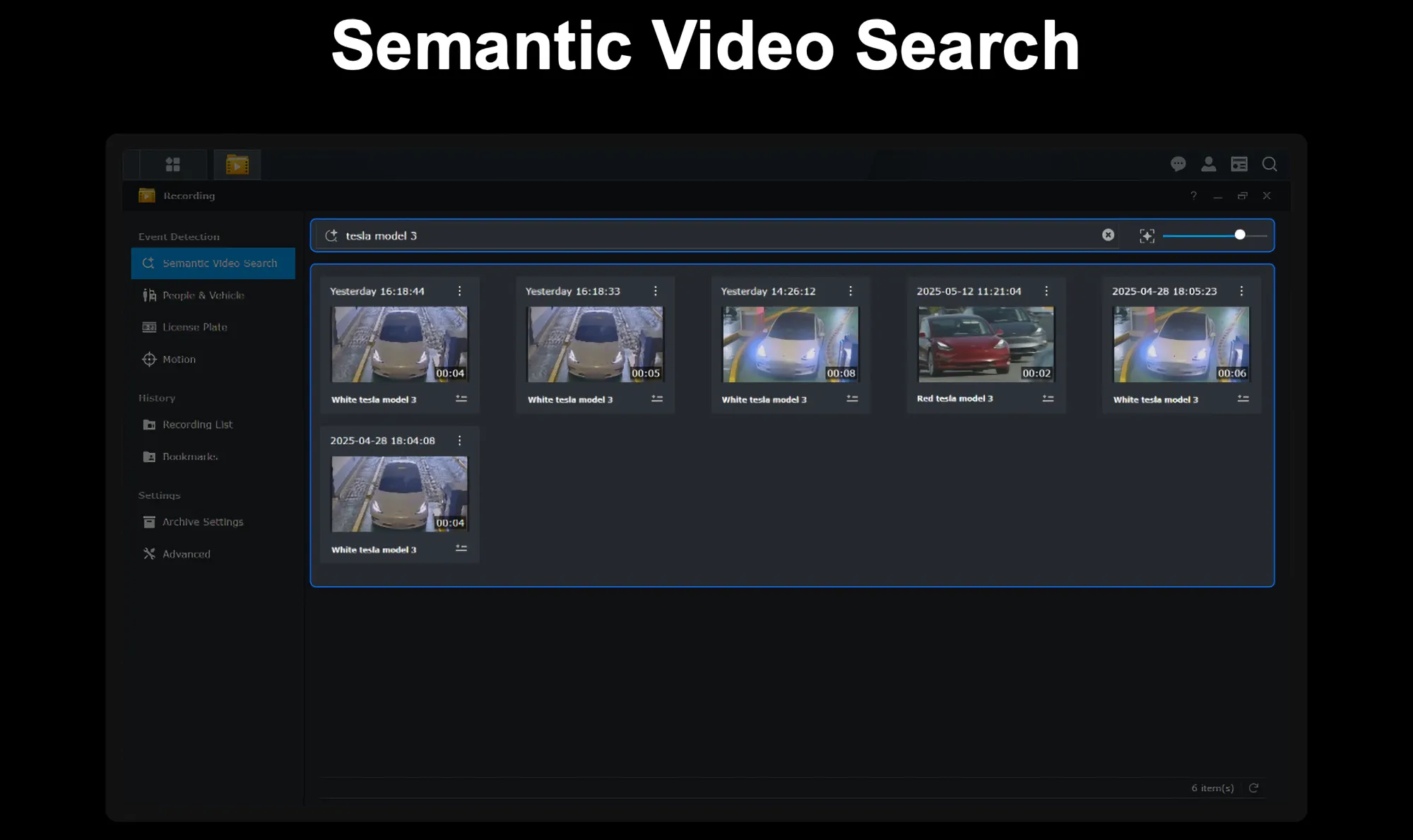
In addition to face and license plate recognition, the DVA7400 will feature semantic search capabilities. Users will be able to enter text descriptions to quickly locate specific footage and bookmark it for future reference.
Finally, something else that has already been presented at this year's Computex expo is Synology's introduction to another cloud surveillance platform, the C2 Surveillance. Now, their previous service was renamed to allow for this new full cloud-based service.


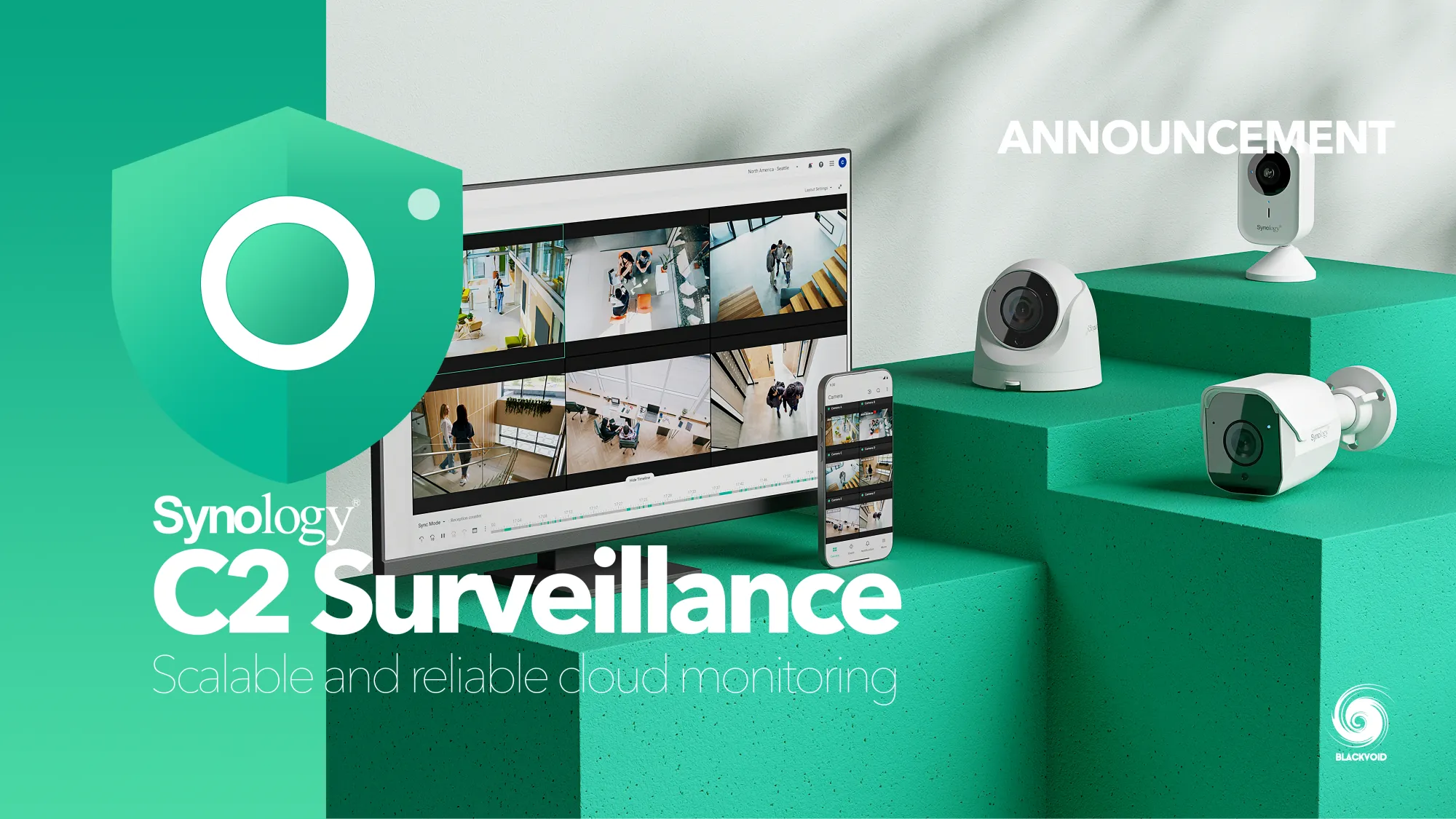
The idea behind this cloud platform is that it offers simplicity, flexibility, and remote monitoring management for fast-growing businesses, all without the burden of on-premises setup.

For businesses that demand minimal on-site deployment and IT resources, the C2 Surveillance solution is a perfect combination. This VSaaS solution is easy, flexible, and stable. It can also be used for easy multi-site deployment and management. On top of all, C2 Surveillance does not consume external bandwidth when a local direct connection is detected.
Users can be assigned flexible permissions based on monitoring policies, allowing roles such as IT managers, security personnel, and others to have the access they require.
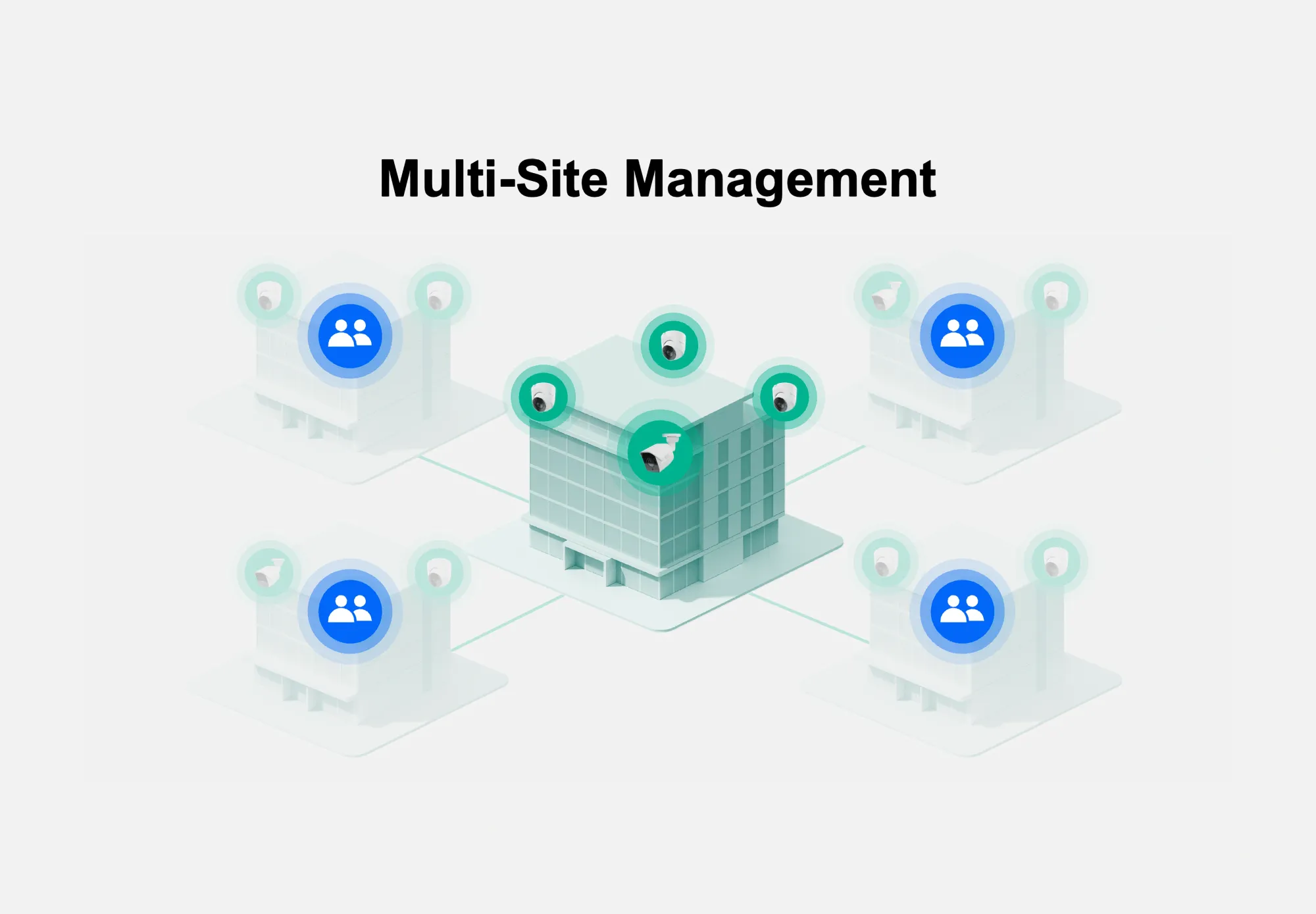
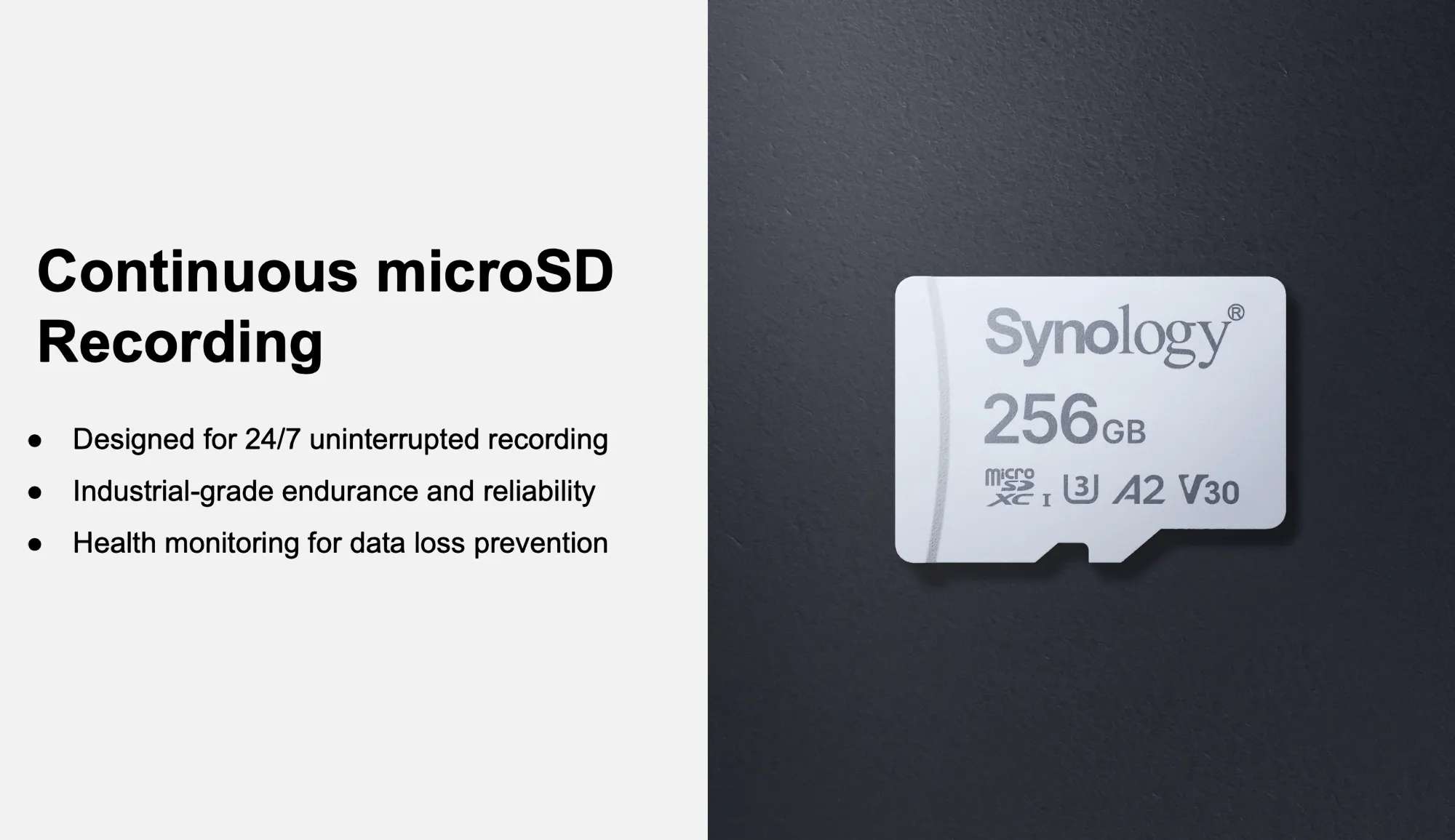
The platform offers Failver Offline mode that will once enabled, prioritizes local direct streaming from cameras on the same network. If the connection becomes unstable, the system automatically bypasses the cloud path, allowing users to continue monitoring live footage uninterrupted.
What also differentiates this platform from others is the pricing. Many VSaaS providers require users to purchase fixed licenses upfront, which leads to high initial costs before users even fully understand their needs. With C2 Surveillance, we are only required to pay for the cameras we need with no extra license fees. Storage can also be increased as needed, meaning that users can scale at their own pace without bearing excessive upfront costs.
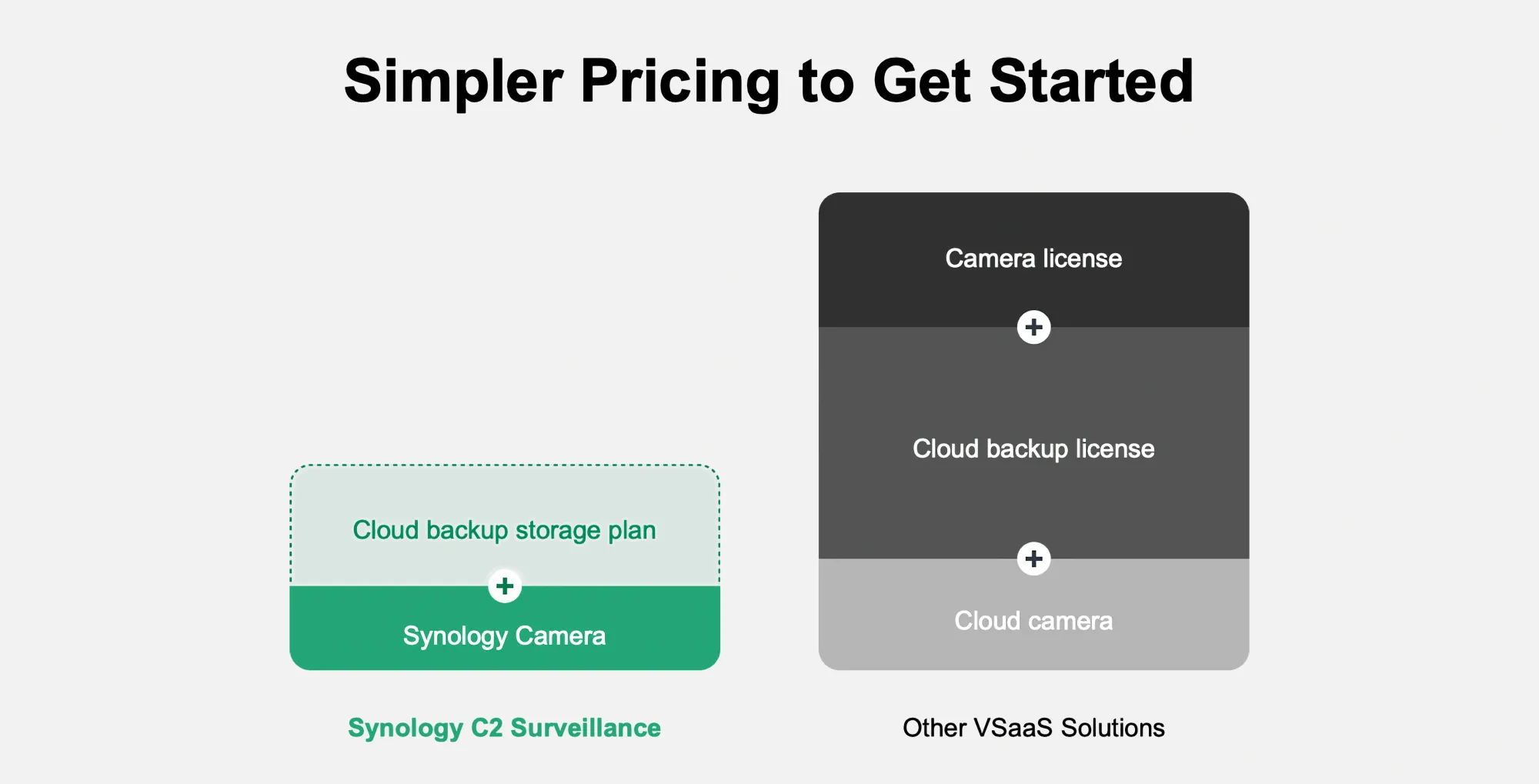

With both on-premise and VSaaS options, the Synology surveillance platforms offer something for everyone. With a wide array of branded cameras as well as support for over 8800 3rd party ones, there is still room for development.
The company is working on making a unified hybrid surveillance system that enables users to easily manage both cloud and on-premises surveillance deployments. This flexible architecture can operate independently or be integrated, helping businesses scale more efficiently and adapt to various complex scenarios.
Work smarter and safer with Synology Office Suite
One final platform update was announced and presented as part of their Synology Office Suite. Specifically, the communication tool segment. Among their existing Synology Mail server, Calendar (in its new version 3.0), and chat platform, we got a sneak peek into the future of on-premise communication.
Synology introduced the new ChatPlus and Meet, a new private unified communication platform.

Synology ChatPlus and Meet combine real-time messaging and video conferencing features, providing a single interface that meets all enterprise communication needs, while keeping the entire team communication process on-premises.

This being enterprise-driven can be viewed from pure performance numbers. ChatPlus supports over 10,000 simultaneous users, and its video conferencing can accommodate up to 7,000 participants, effectively meeting the demands of large organizations.
An on-premise productivity solution that enhances efficiency and security for team collaboration
Just like many commercial or free alternatives, it offers a comprehensive and flexible architecture—from teams and channels to group chats as well as one-on-one conversations—making messages easier to find and track.

The platform also provides granular permission controls that allow IT administrators to configure various access rights and delegate some management responsibilities to team owners. While ChatPlus and Meet are two separate apps, they are interconnected, making it easy to handle everything from everyday meetings and calls to large-scale online seminars.

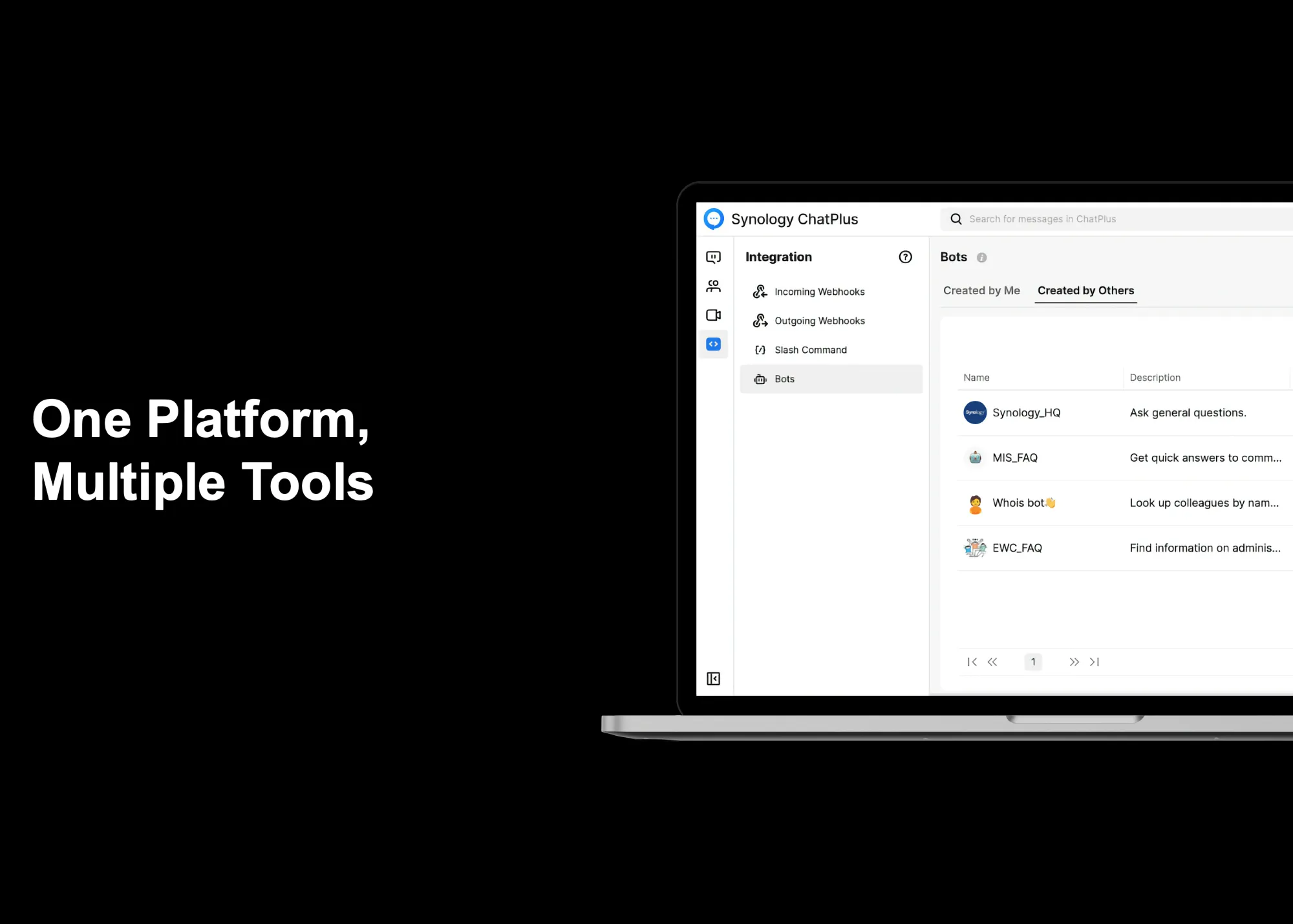
With and already rolled out AI integration with 3rd party LLM platforms via Synology's AI Console, in the upcoming version, it will also soon support all OpenAI API-compatible On-prem AI servers, enabling AI services to be fully implemented on-premises.
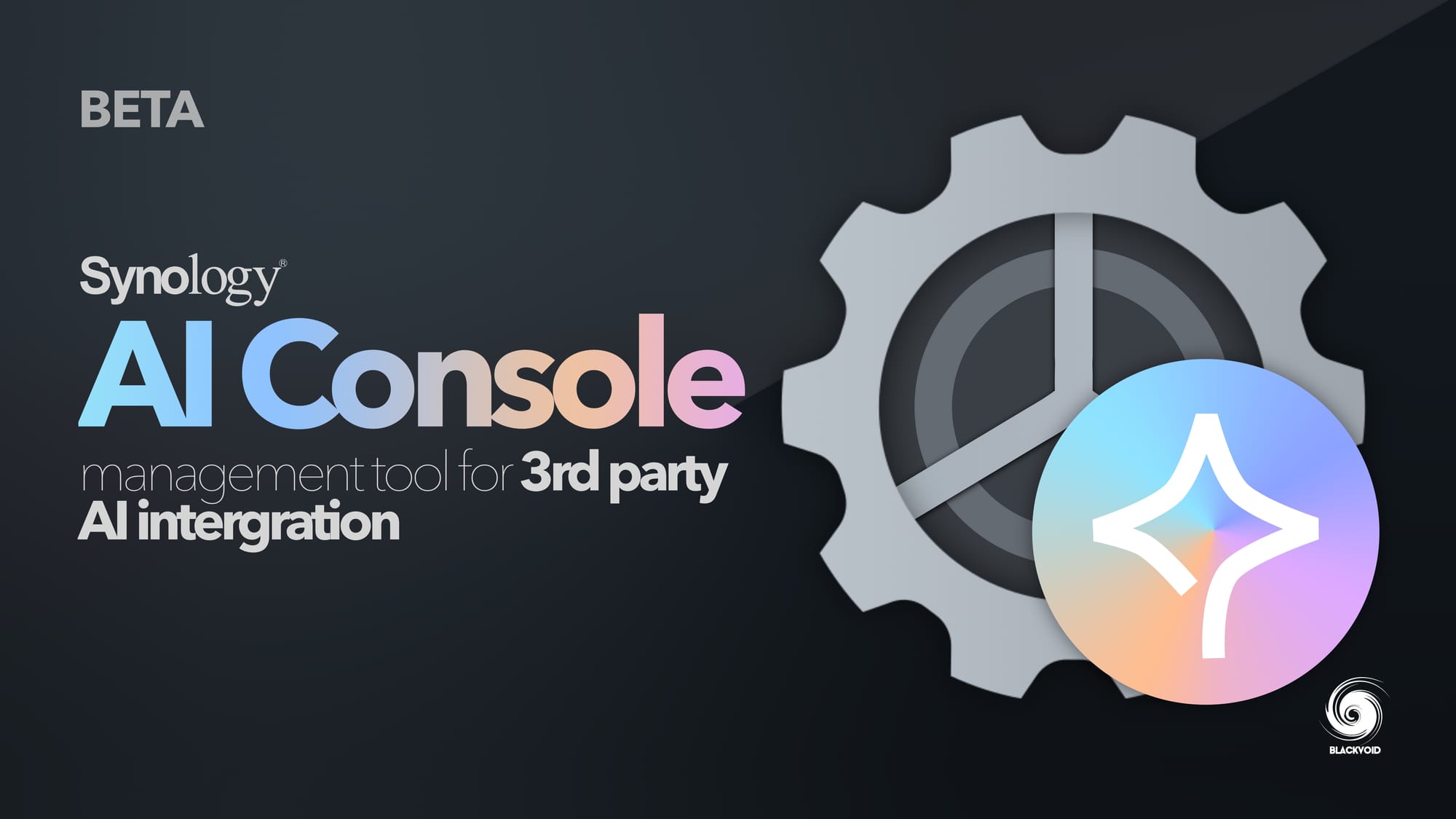

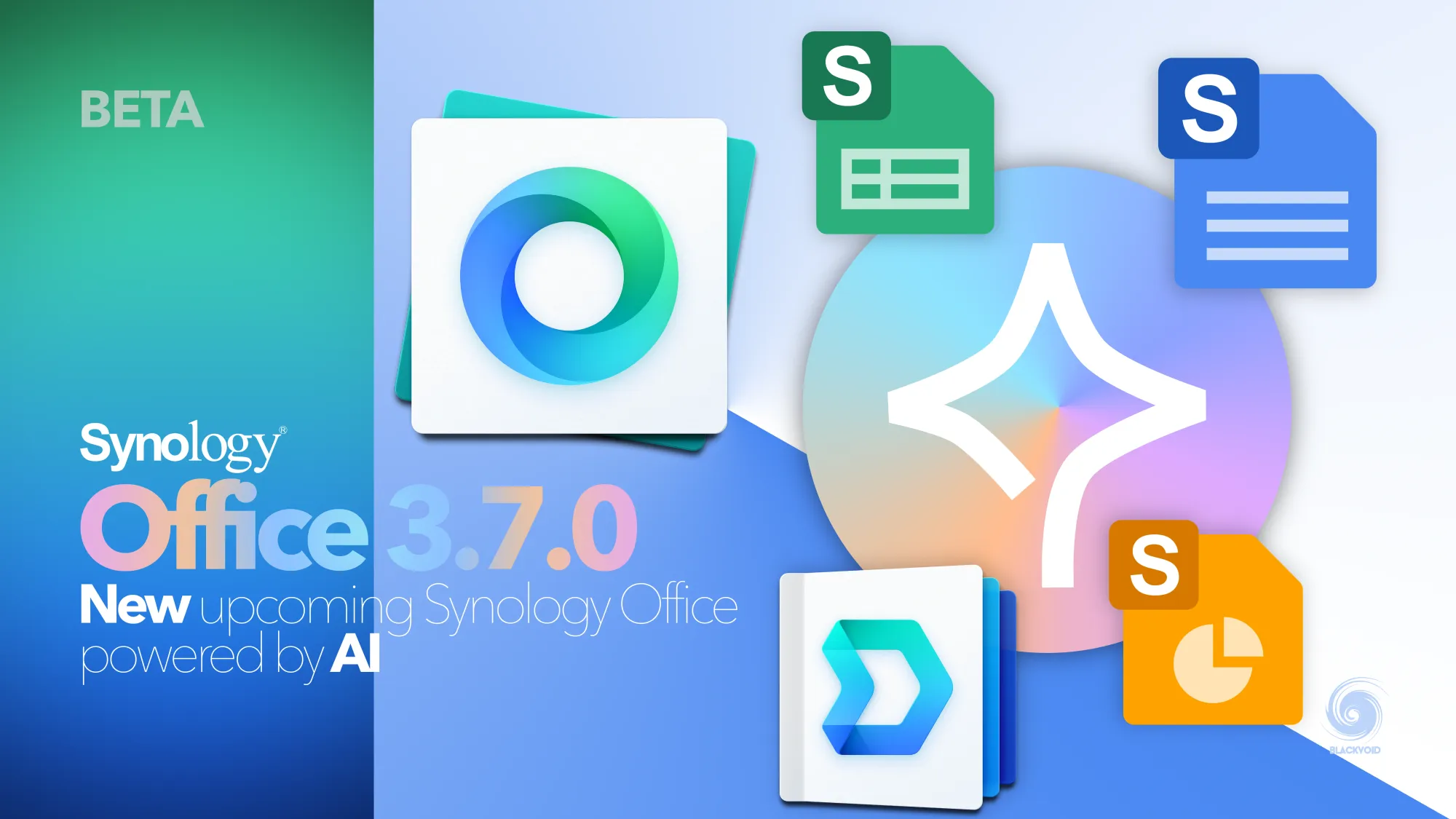

This will guarantee full on-premise containment of content being used with any OpenAI LLM self-hosted platform without the fear of crucial corporate data leaving the infrastructure.

In short, Synology offers 100% data ownership, enterprise-grade security, user-friendly management tools, and high cost-effectiveness, empowering IT teams to strengthen control and ensure compliance.
Moving forward, Synology will launch even more private cloud AI applications to accelerate enterprise AI transformation, in an effort to create a smarter, more efficient, and more secure private cloud work platform for businesses.
Conclusion
There we have it, Synology Solution Day 2025. New hardware, new platforms, better security. A bold push into Tier 1 and Tier 0 markets, with new features also coming for existing platforms.
Whether there is a need for small businesses or enterprise-grade file and object storage capacities, Synology has something for everyone. In this modern age of increased cybersecurity threats, data storage and protection are essential, no matter how big or small the needs of a company or individual are.
With an already available Active Protect platform, Synology is looking to offer a simple turnkey solution that will provide a professional solution with minimal effort and expertise needed.
Speaking of security, the surveillance portfolio has grown as well with the introduction of new PoE cameras, DVA models, and PoE network switches offering a complete physical systems monitoring and advanced AI-diagnostics.
Most of the presented solutions are already available, with others to follow in the upcoming year, and by the looks of it, Synology is just warming up.
